If you're looking for a cool, crunchy and sweet ice-cold treat to cool you down during the summer, look no further. Korean Bingsu is traditionally a shaved ice +milk that's been mixed with sweetened condensed milk, then piled high with fruit and sweetened red bean paste, then topped with a few squares of mochi. It's simply perfect for beating the summer heat. Keep reading for a healthier mango bingsu recipe!
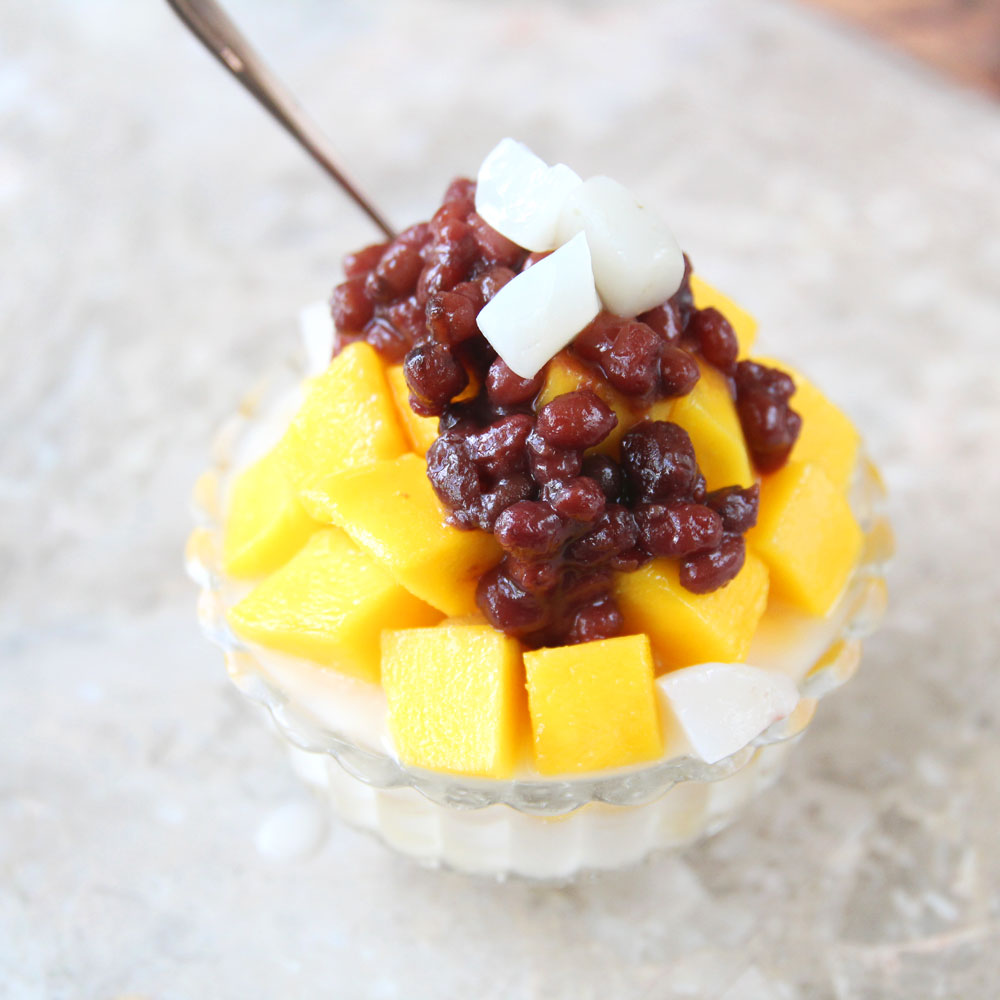
Cold, sweet, crunchy and juicy, bingsu (the Korean shaved ice bowl) hits all the right notes for a summer dessert.
Whenever I visited my grandparents in Korea over the summer, this was the one food I went out of my way to eat. This delicious summer bowl first starts with a layer of shaved ice and frozen milk drenched in a thick syrup of sweetened condensed milk. Then it's fruit (in this case, mango), adzuki beans and finally a sprinkle of mochi. It's a fairly straightforward recipe that's easy to make if you have all your ingredients prepared.
A mountainous layer of ice, fruit, beans and mochi--how wonderful sounding is that?
Healthier Bingsu
I was craving some bingsu at home (and Korea during COVID just seems so far away!), so I decided to make my own version of bingsu-- but lighter and healthier. Here's how you can do it, too:
- Instead of milk, use unsweetened almond milk
- Replace sweetened condensed milk with stevia
- Use more fruit
- Top with konjac cubes instead of mochi
All these healthier substitutions mean more reasons to enjoy bingsu guilt-free ♥︎
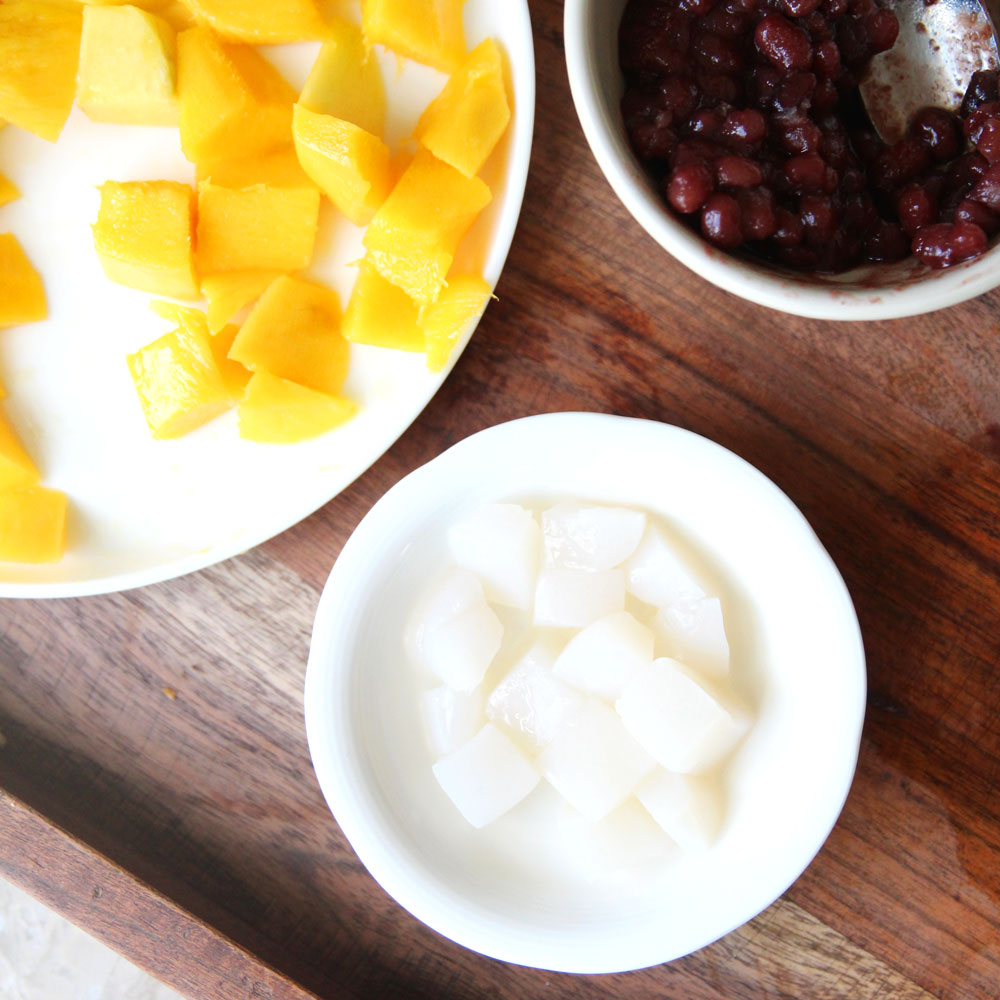
Ingredients Used to Make Healthier Mango Bingsu
**I've linked some of these ingredients to amazon.com to give you an idea of what they are, but you should also be able to find them in your local grocery store (usually, the natural & organic food section). They are also affiliate links, which means that I earn a commission as an Amazon Associate if you decide to purchase the items. The price will be the same for you, link or no link 🙂
- Ice cubes & Almond milk - storebought bingsu uses a machine to shave frozen milk and ice into light and fluffy flakes, but at home that not very easy to do. Here's how I made the bottom ice layer (for 1 serving): blend ½ cup of ice cubes with ⅓ cup of unsweetened almond milk and 2 packets of stevia. Drain excess liquid before scooping the ice into a bowl.
- Fresh mango, diced - the diced fresh mango goes really well with bingsu for a couple of different reasons. It's a gorgeous tropical fruit that's chewy (almost hearty) and full of sweetness. But if you don't have mangos on hand you can use other fruits, too! Berries are another favorite bingsu topping of mine.
- Sweetened red bean paste, coarse (homemade or from a can) - Bingsu isn't bingsu without this ingredient. The sweetened bean + milk + fruit is a food combination that's very representative of East Asian desserts. If you haven't ever tried, you're missing out on a whole lot of deliciousness. Sweetened red bean paste can be made at home (here's a recipe by JustOneCookbook that goes through all the steps of making sweetened red beans from scratch). But if you're lazy like me you can also buy them pre-made or in a can (link here).
- Konjac cubes - this is what's used to replace the mochi in this recipe. Read note below if you're curious about what konjac tastes like!
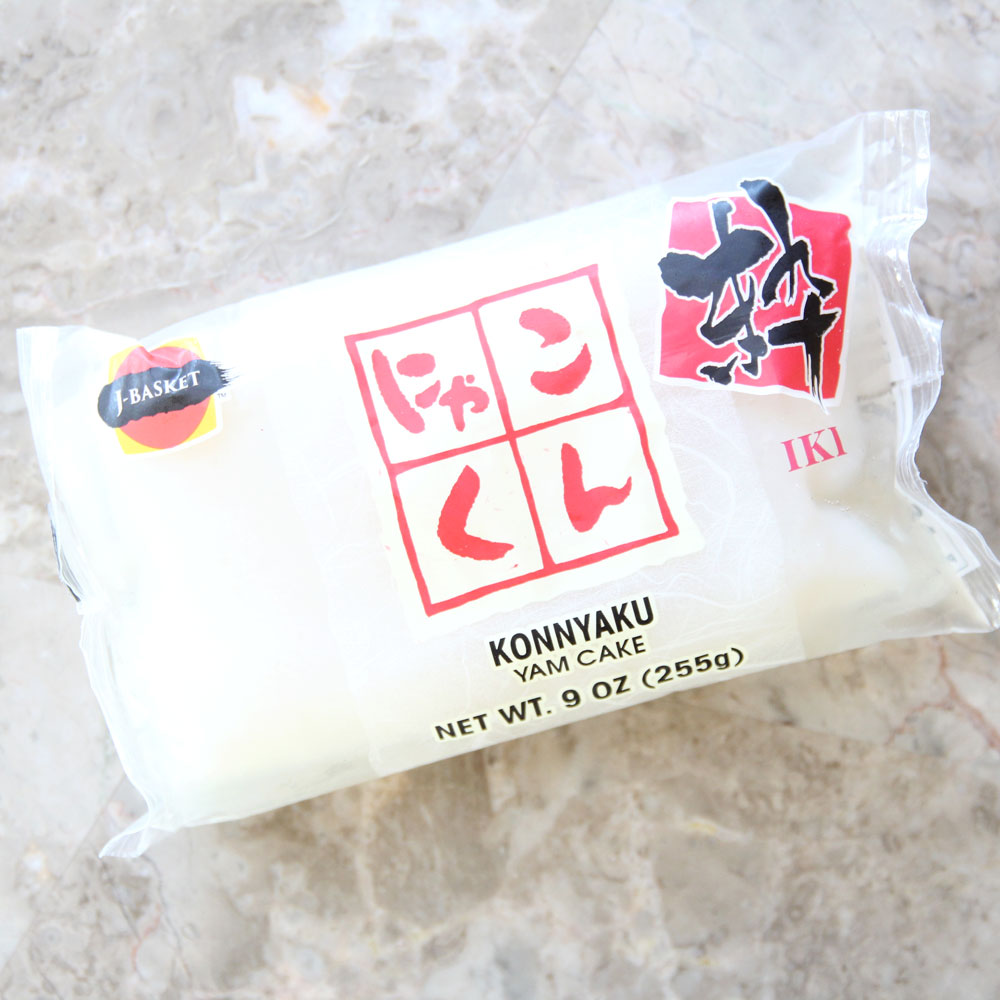
What is Konjac?
Konjac, konnyaku, or elephant yam, is a plant grown in Asia. It’s packed with a type of dietary fiber called glucomannan that can be used to make high fiber flour, jellies, noodles and even “rice.”
It has a little taste of its own but its chewy, jelly-like texture makes konjac a popular ingredient in Asian (mostly Japanese) cooking. The texture of konjac is chewy like rubber but softer and denser than gelatin. There are many health benefits of consuming konjac as well, such as boosting immune health, lowering blood sugar and cholesterol levels, skin and gut (digestive) health, wound healing, and finally—weight loss.
Is Konjac healthy?
Glucomannan is a fermentable dietary fiber that's in konjac, and it turns out that human salivary and enzymes in our mouth cannot split linkages of glucomannan, so this fiber passes relatively unchanged into the colon until the bacteria in the colons ferment it afterward. That’s why konjac is said to be beneficial for people who are looking to lose or maintain a healthy weight. Additionally, konjac absorbs water in the gastrointestinal tract to form a fiber, which in turn controls cholesterol levels.
Where You Can Buy Konjac
Konjac that you can buy from most Asian grocery stores (or online on Amazon) generally come in two shapes: bars and noodles. They're made by mixing glucomannan flour with regular water and a little lime water, then formed into the desired shape. Another popular konjac shape is the “shirataki rice” which is basically made of the same ingredients as shirataki noodles but in a rice grain-like shape. Konjac has very little flavor of its own, and so it takes on the flavor of the sauce and seasonings during the cooking process.
More Korean Recipes (HERE)
Step by Step Guide
How to Make Healthier Mango Bingsu (Korean Shaved Ice)
STEP 1: Prepare Mango
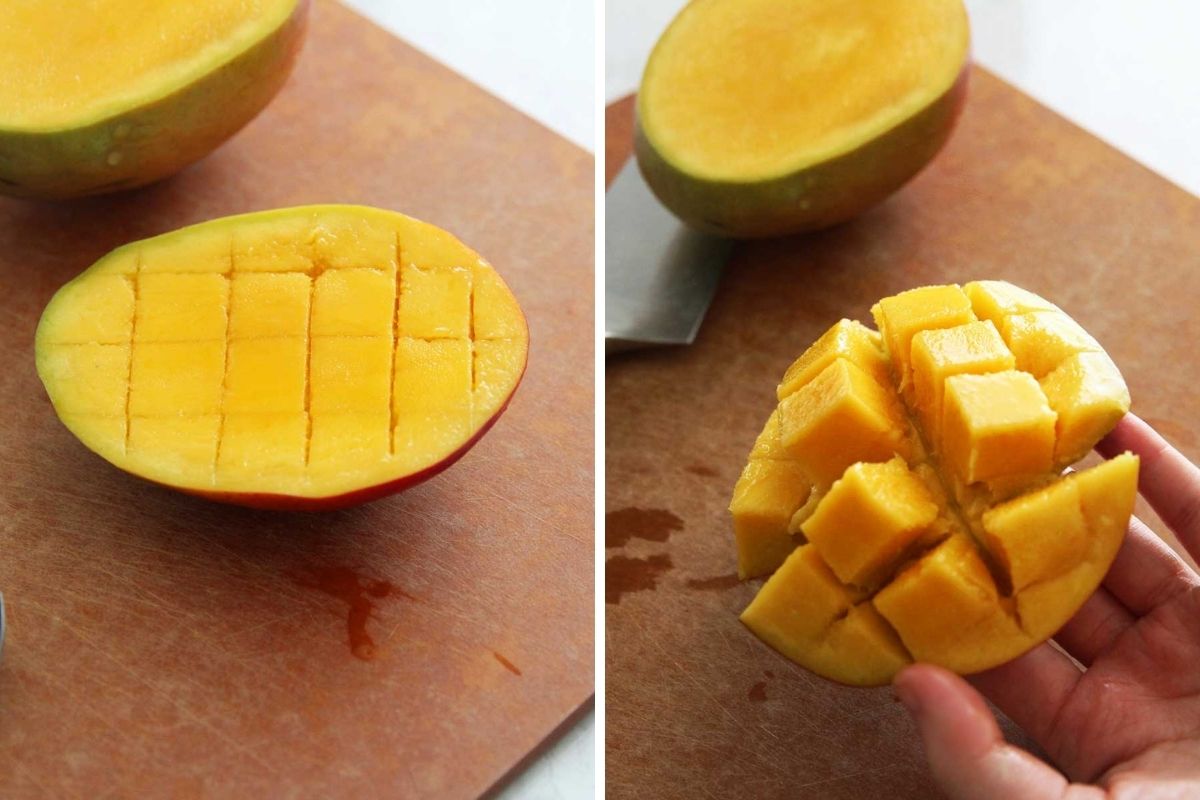
Cut mango slices into cubes by first cutting crosswise cuts, keeping the skin intact. Use a spoon to cut out the fruit cubes out of the skin.
STEP 2: Prepare Konjac
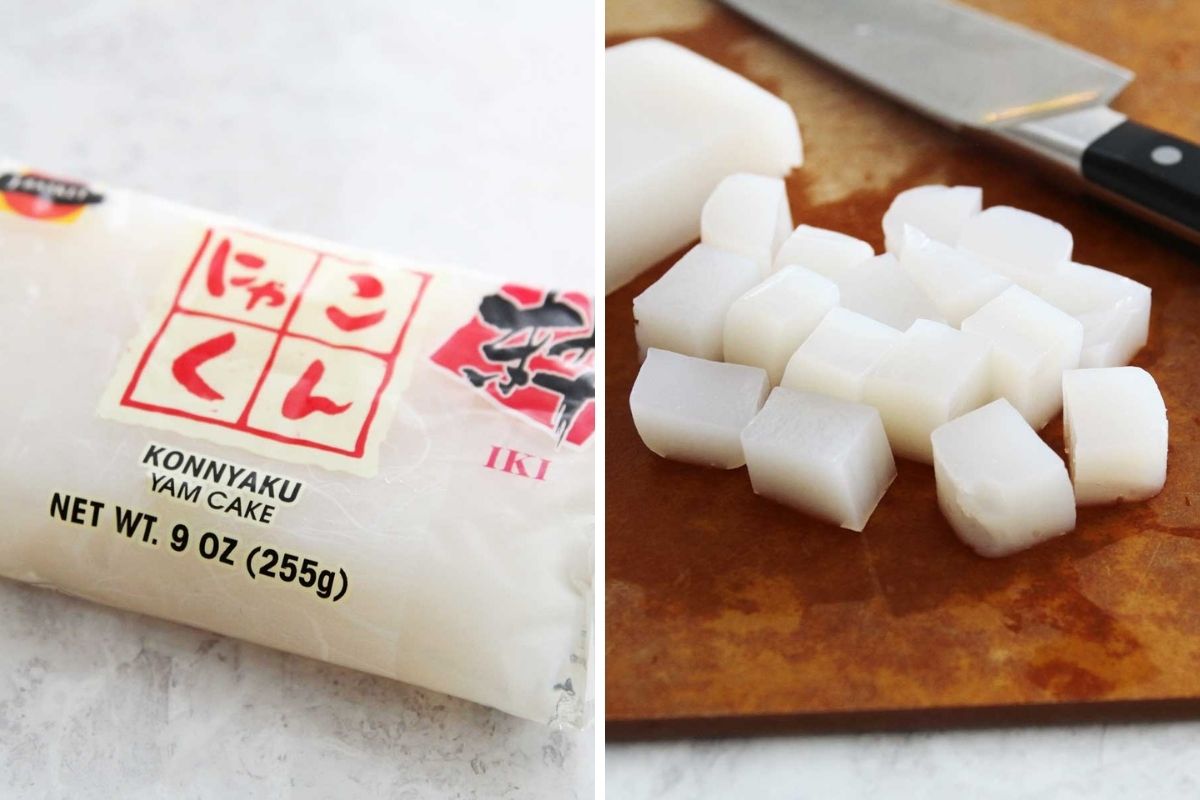
Wash and dice konjac (konnyaku) into small ½ inch cubes
STEP 3: Start assembling the Mango Bingsu Bowl
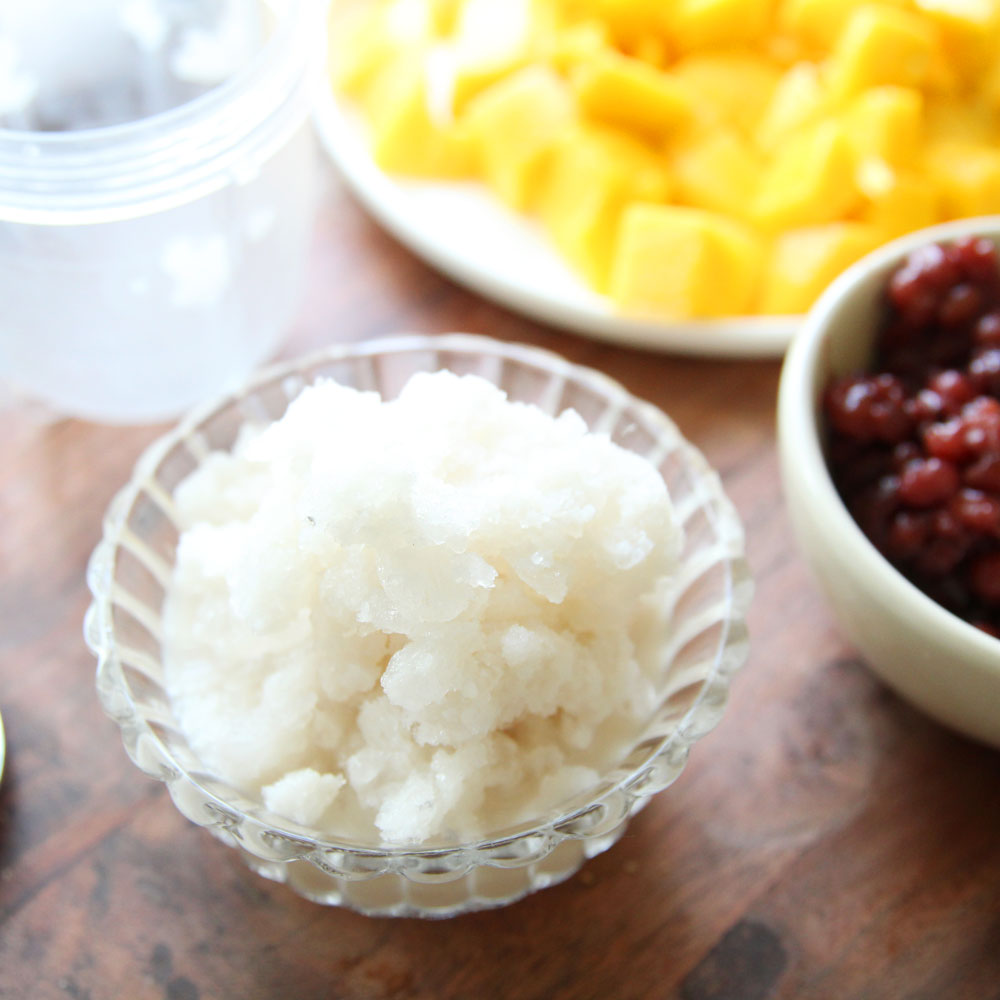
For a 1 serving bowl, blend ½ cup of ice cubes with ⅓ cup of unsweetened almond milk and 2 packets of stevia. Drain excess liquid before scooping the ice into a bowl.
STEP 4

Top with fresh mango cubes
STEP
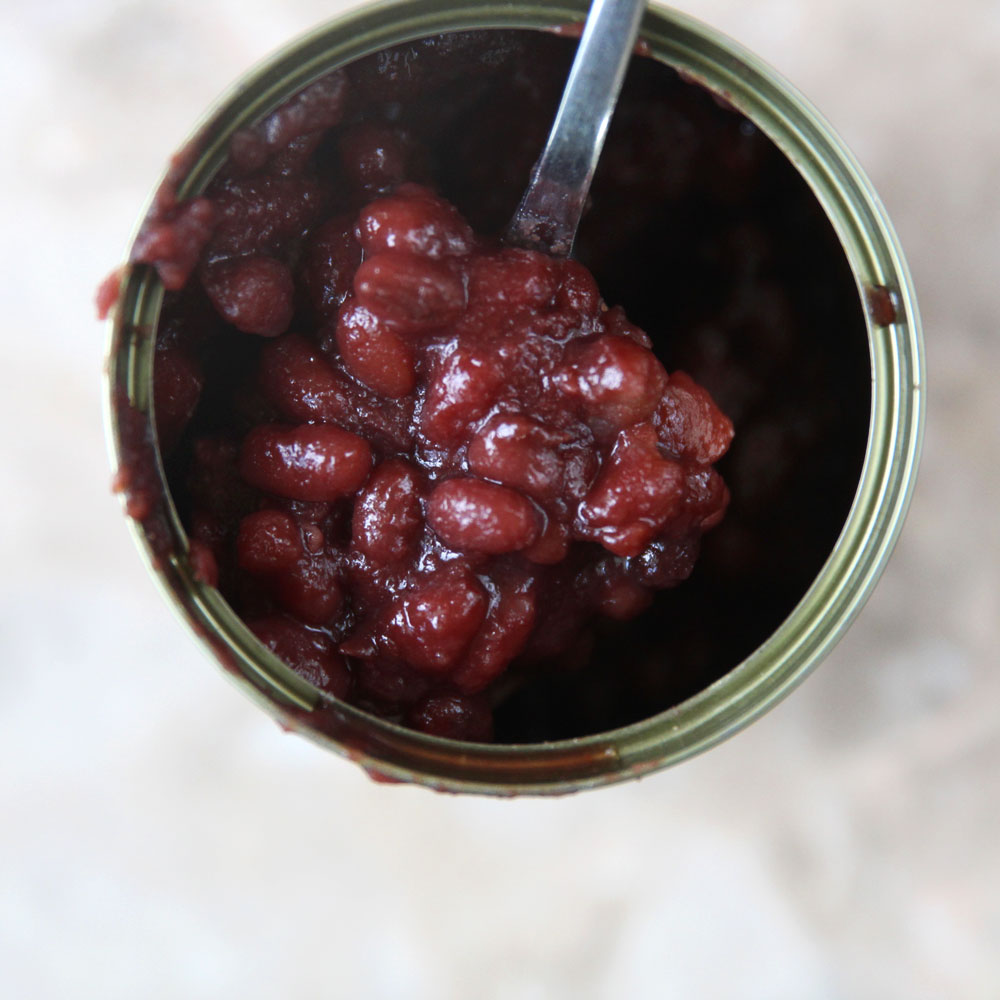
Then with the sweetened red beans
STEP
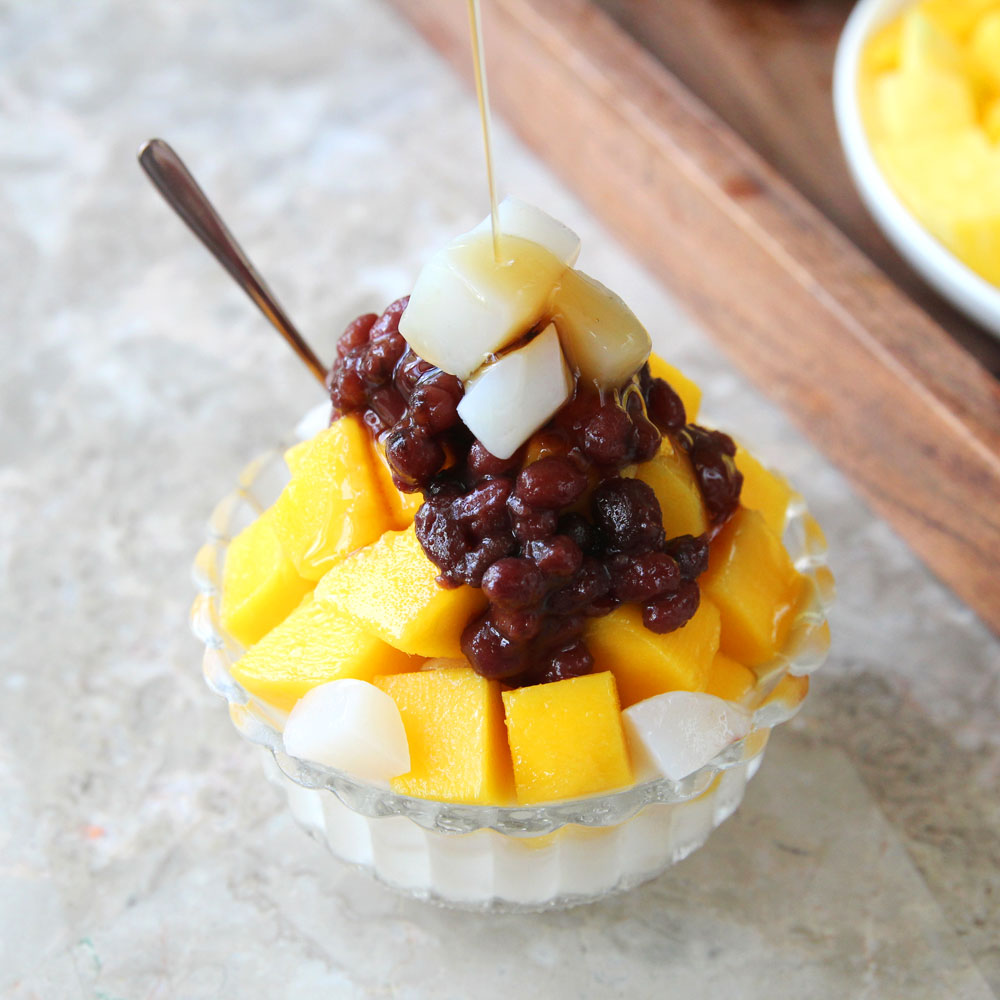
Sprinkle on konjac cubes. Drizzle with honey, maple syrup or agave syrup if desired. Enjoy!
Recipe Variations and Optional Add Ins for Mango Bingsu:
- There are different types of Bingu, mostly based on what type of fruit or topping you use to build the shaved ice. Here are some great bingsu recipes I've come to find on the web. Melon bingsu by My Tasty Kitchen Blog. Strawberry bingsu by Asian Inspirations. And even Injeolmi Bingsu, a korean shaved ice topped with roasted bean powder and mochi, by My Korean Kitchen blog.
- Try experimenting with different syrups! Try chocolate syrup, sweetened condensed milk (or sweetened condensed coconut milk for a vegan option), flavored honey (spicy honey anyone?) or maple syrup.

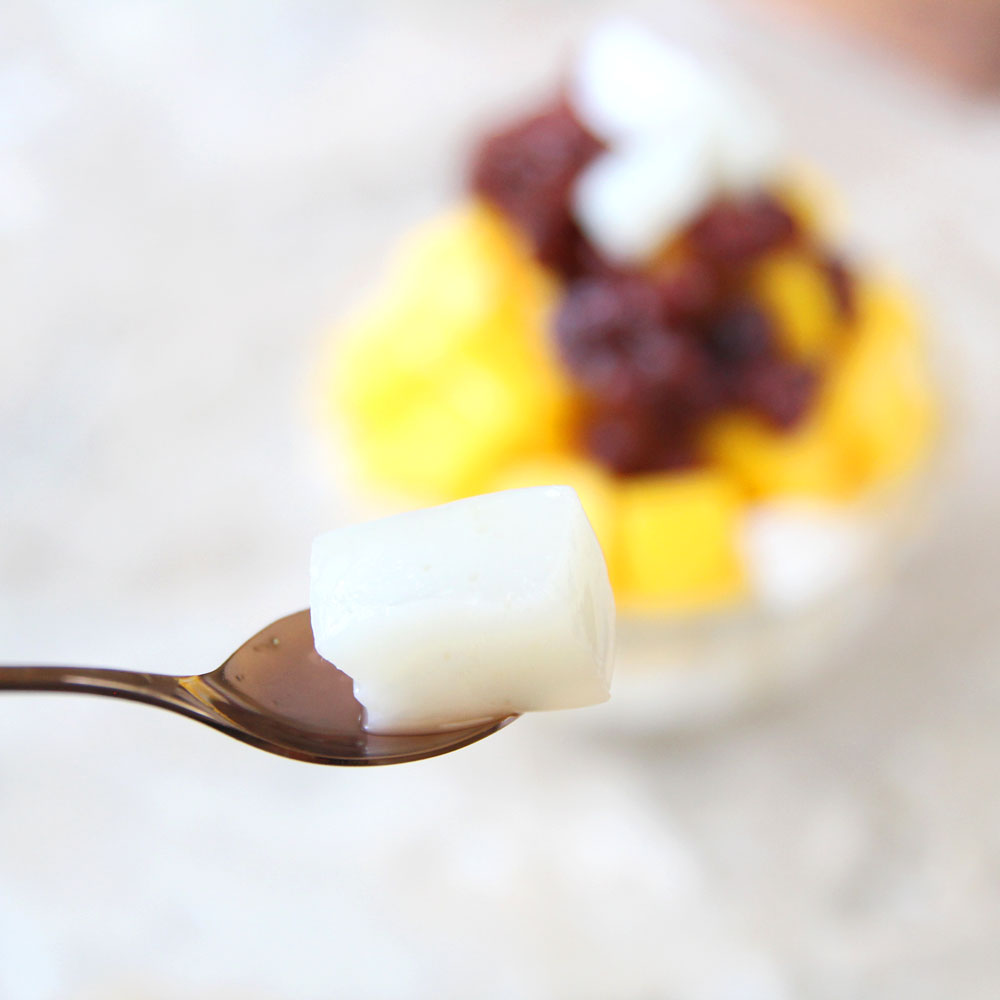
How to Store Mango Binsu
- Other than the ice, you can store the leftover topping ingredients in an airtight container in the fridge for 3-5 days. Having them ready ahead of time will save you half the work of building your favorite bingsu bowl!
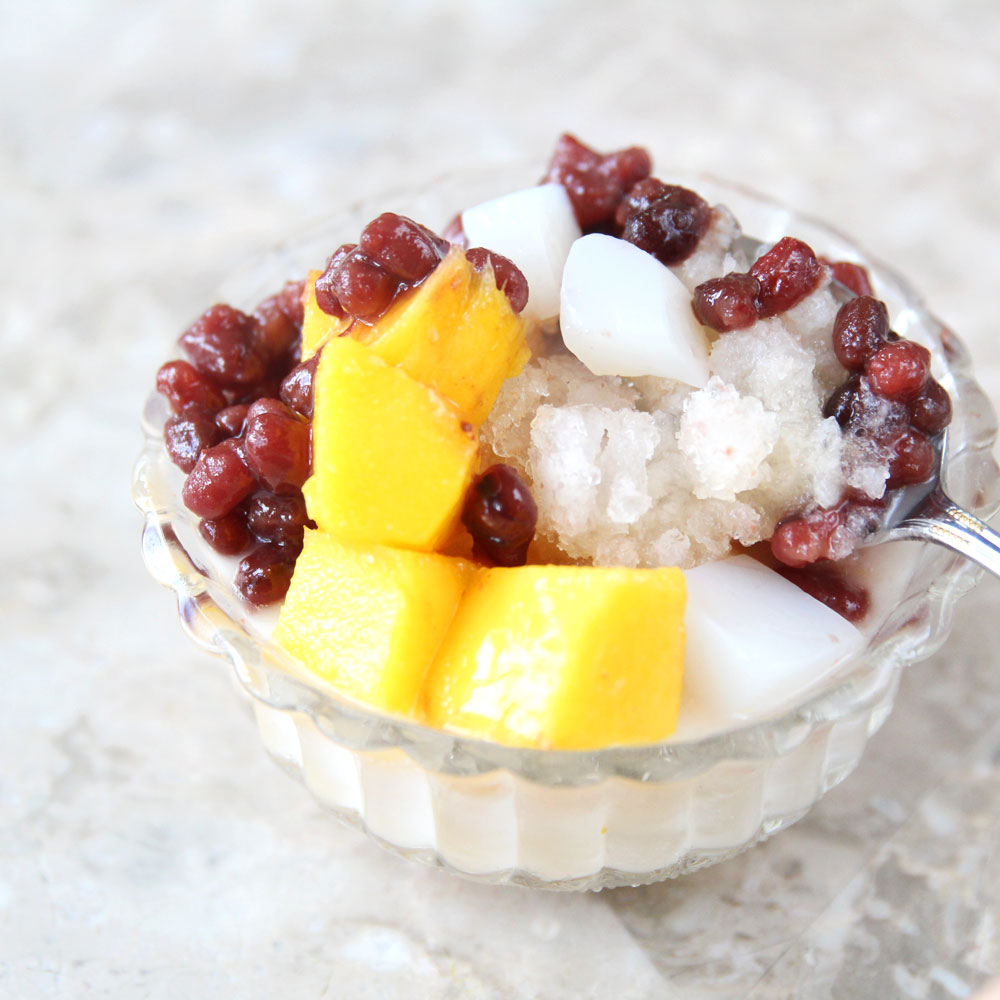
Final Tips
- TIP: right out of the package, konjac has a fishy smell (even though it is not made out of fish). This is due to the calcium hydroxide added to the konjac during the manufacturing process, which acts as a coagulant.
- To help get rid of the smell somewhat, soak the diced konjac squares in 1 cup of water with 1 Tbsp of lemon juice overnight.
- Have all your ingredients ready beforehand before you start preparing the ice. This way you won't risk having the ice melt before you can build your bingsu bowl.
More Konjac Recipes (HERE)

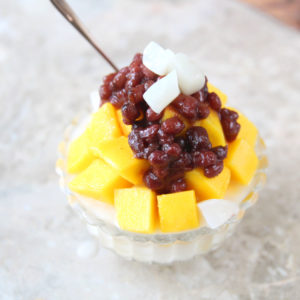
How to Make Healthier Mango Bingsu with Konjac (Korean Shaved Ice)
Ingredients
- ½ cup ice cubes
- ⅓ cup unsweetened almond milk
- 2 packets stevia
- ½ cup mango cubes
- 2-3 Tbsp sweetened red bean paste (koshi an)
- ¼ cup konjac cubes
Instructions
- blend ½ cup of ice cubes with ⅓ cup of unsweetened almond milk and 2 packets of stevia. Drain excess liquid before scooping the ice into a bowl.
- Top with fresh mango cubes
- Then with sweetened red beans
- Sprinkle on konjac cubes.
- Drizzle with honey, maple syrup or agave syrup if desired.

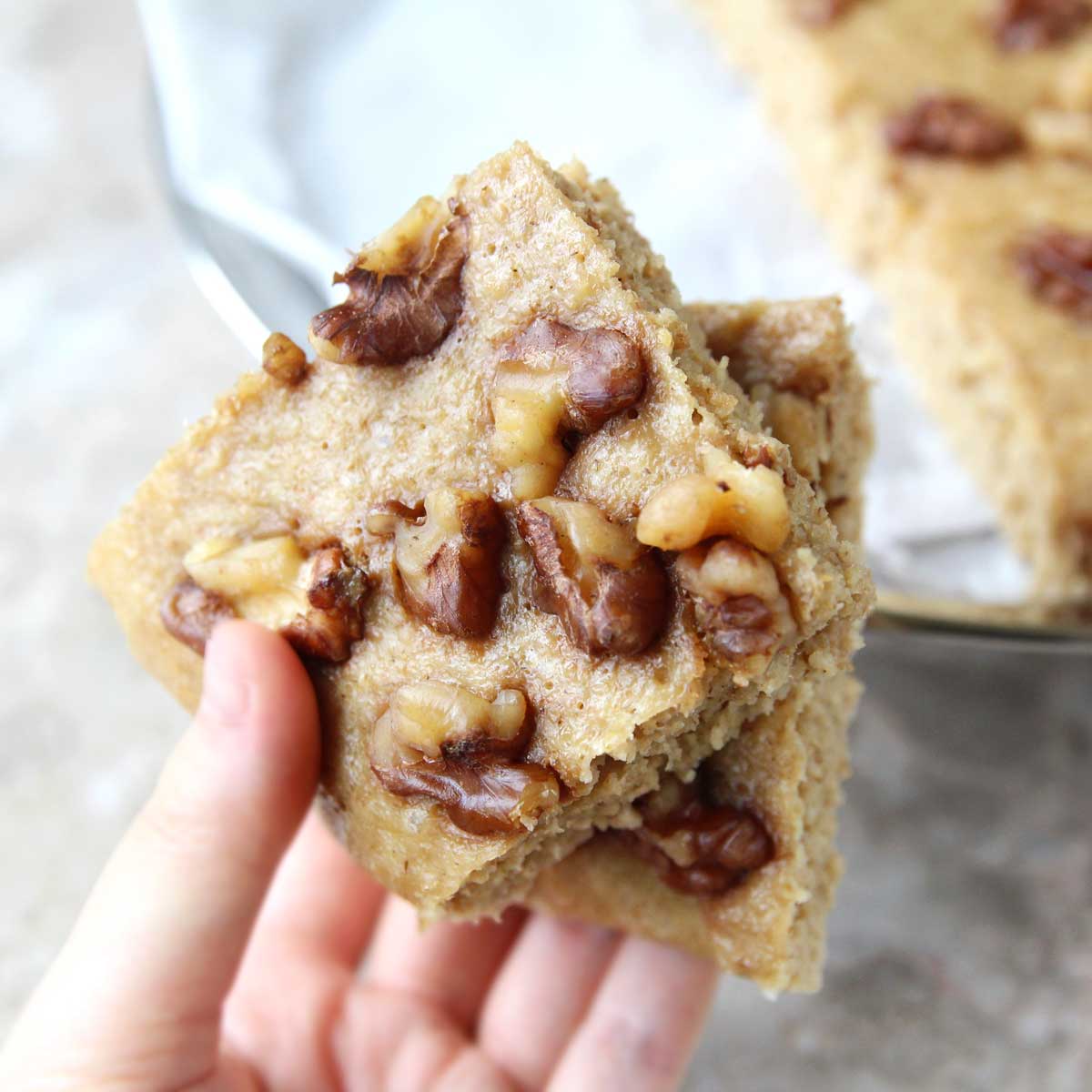
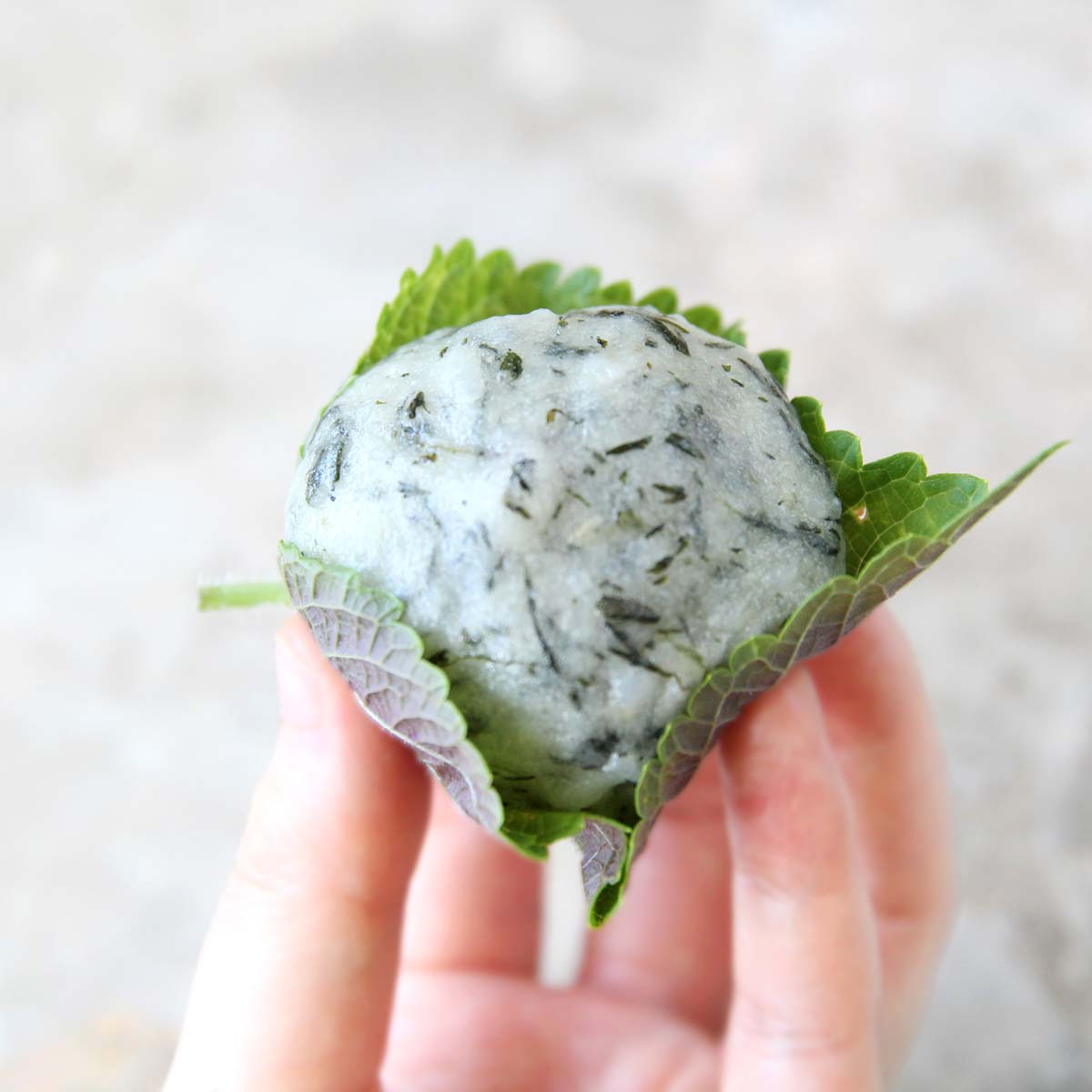
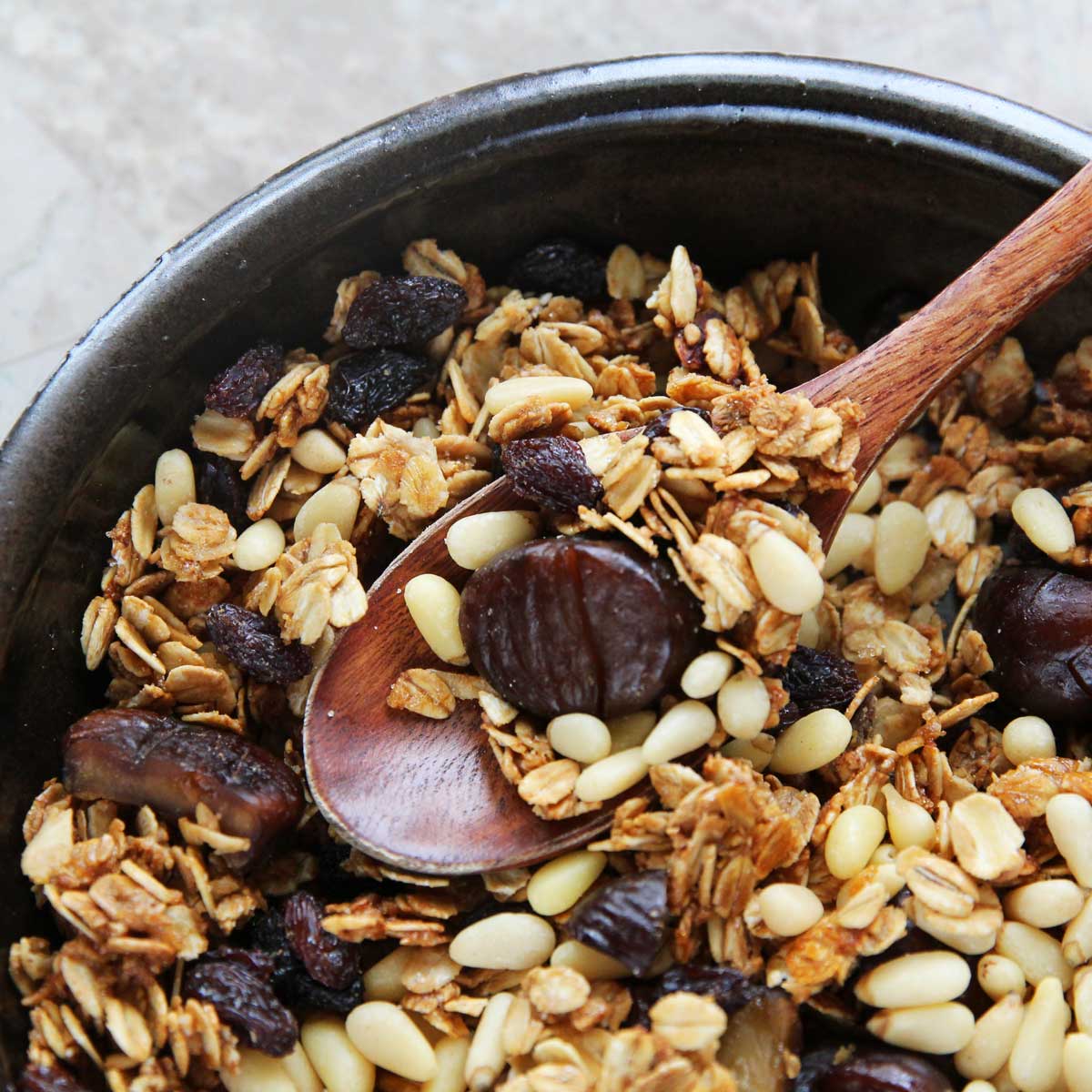
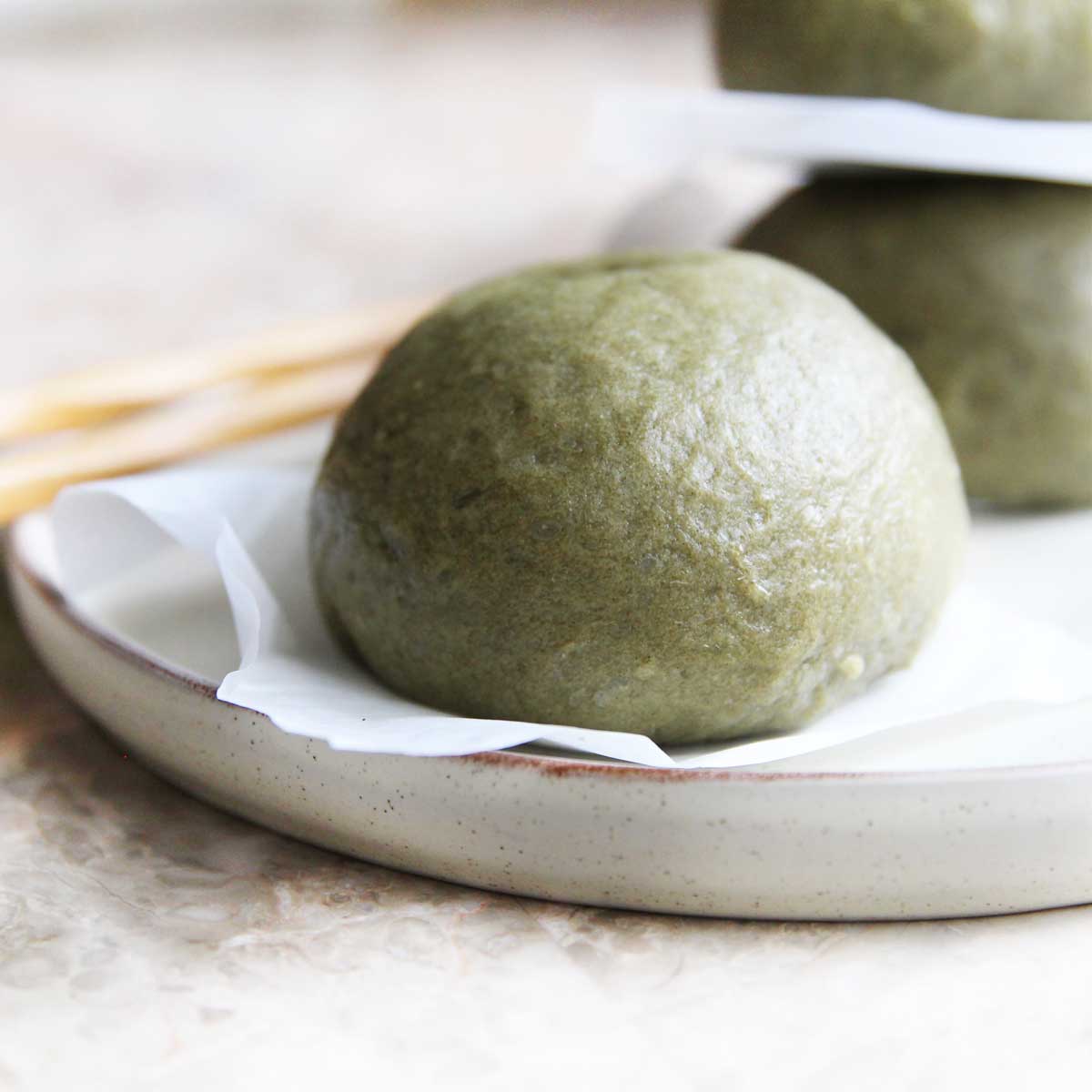
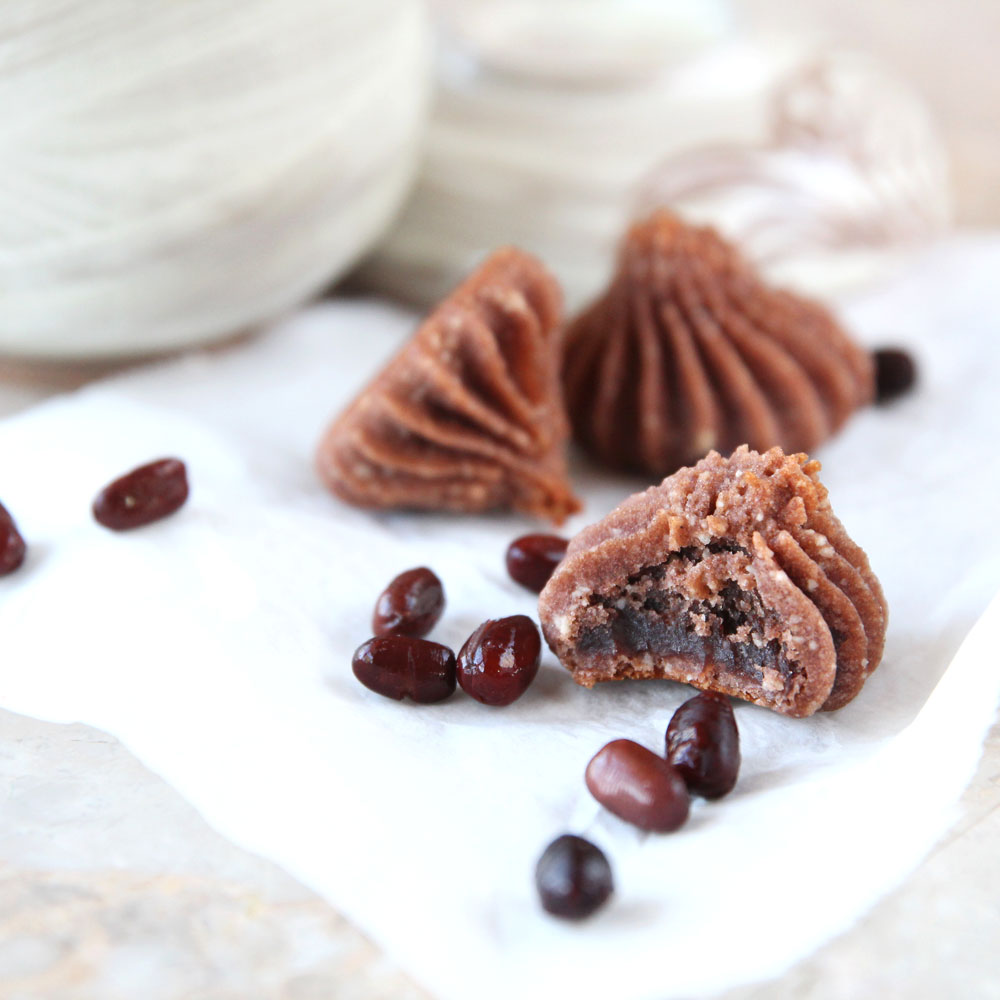
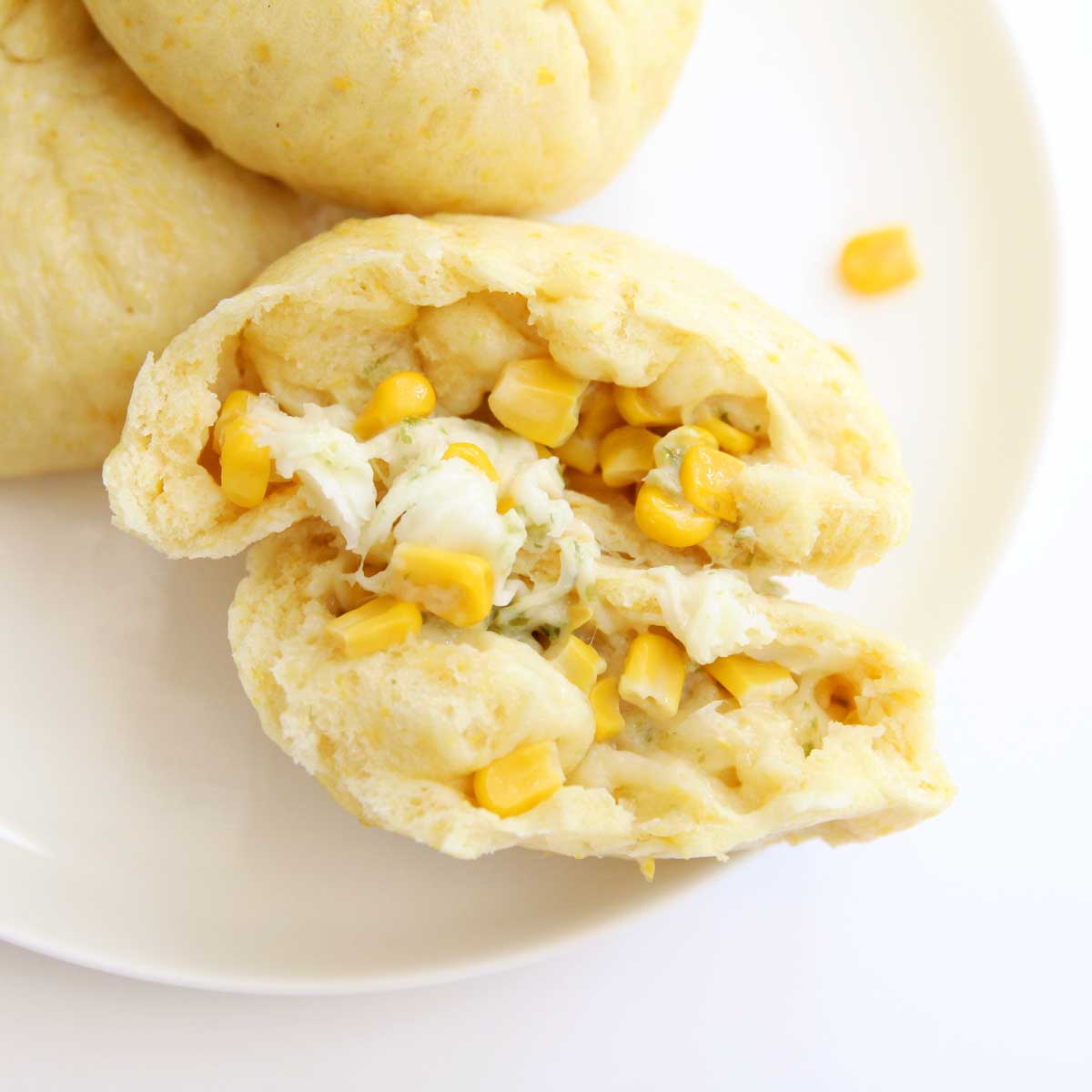
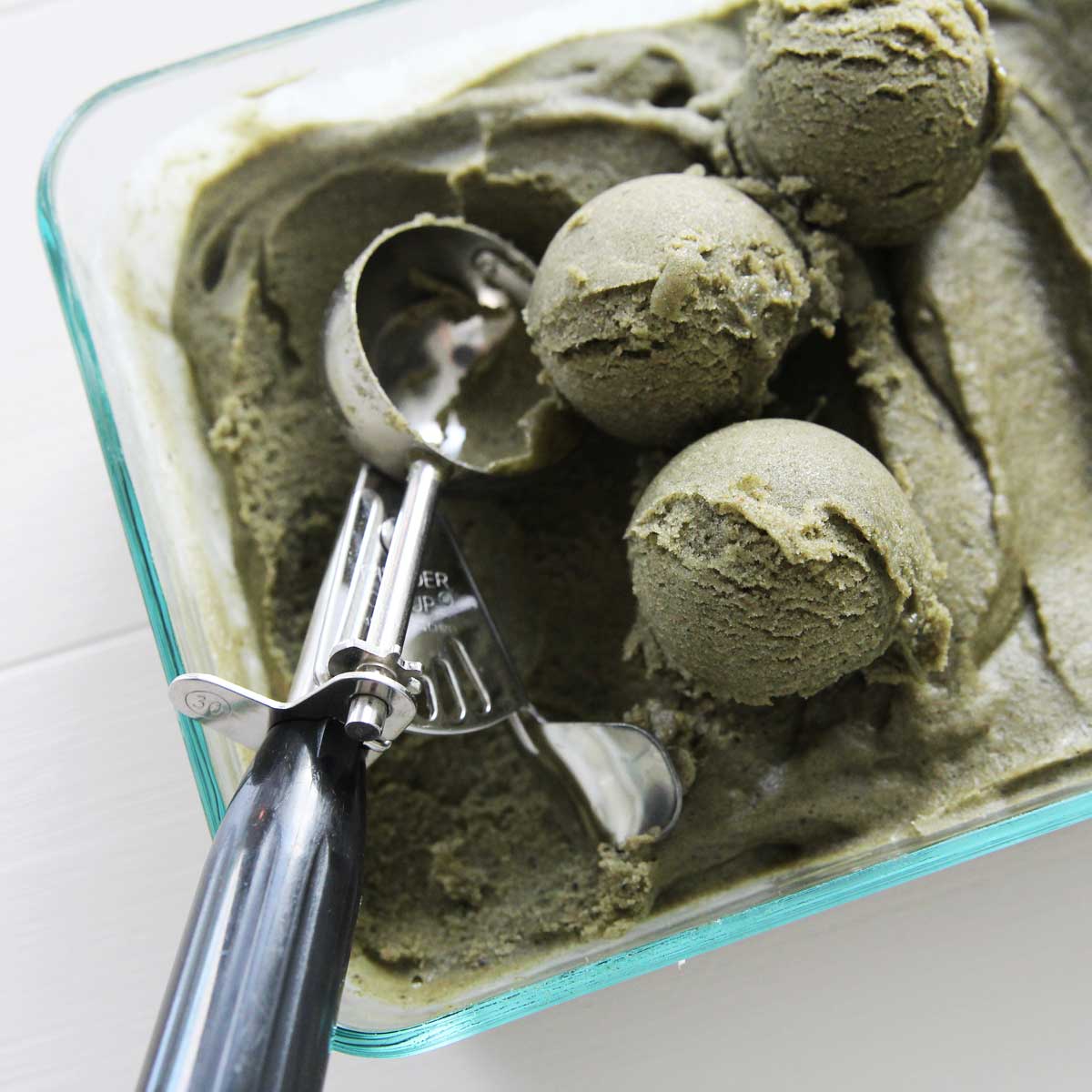
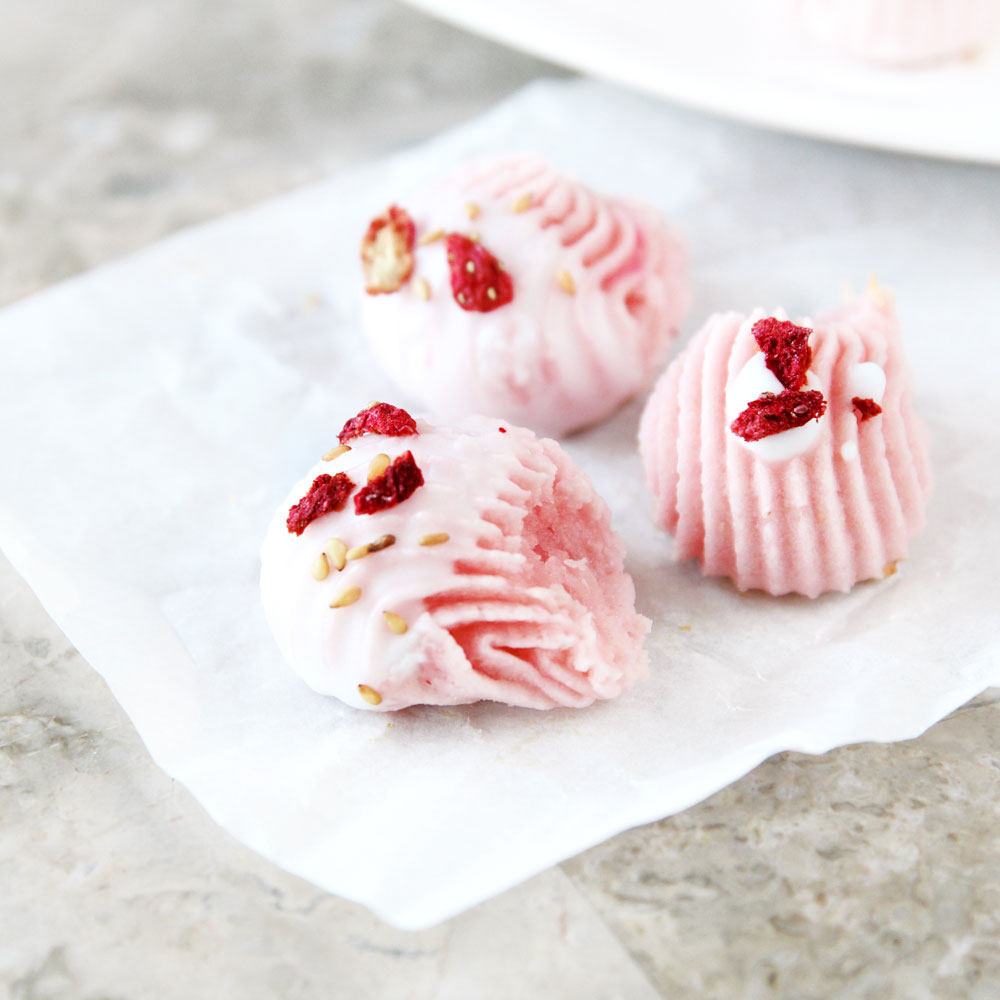
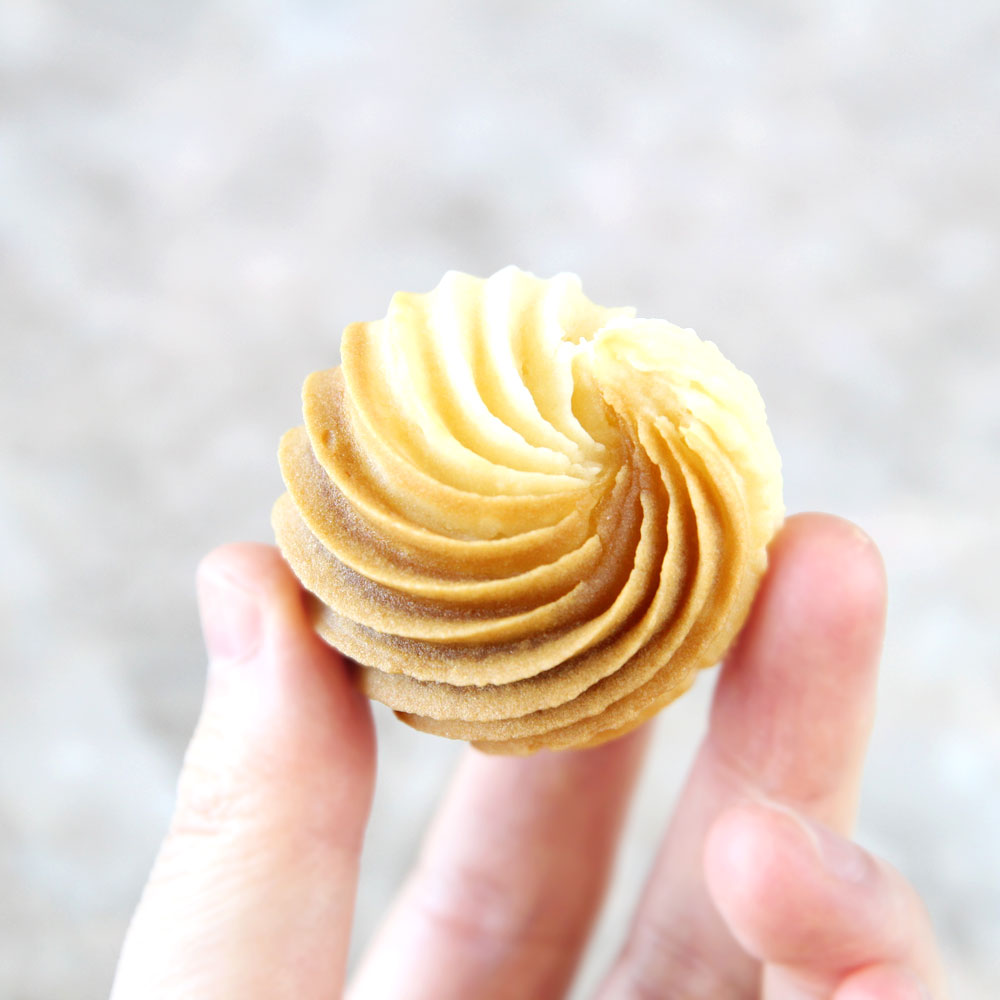
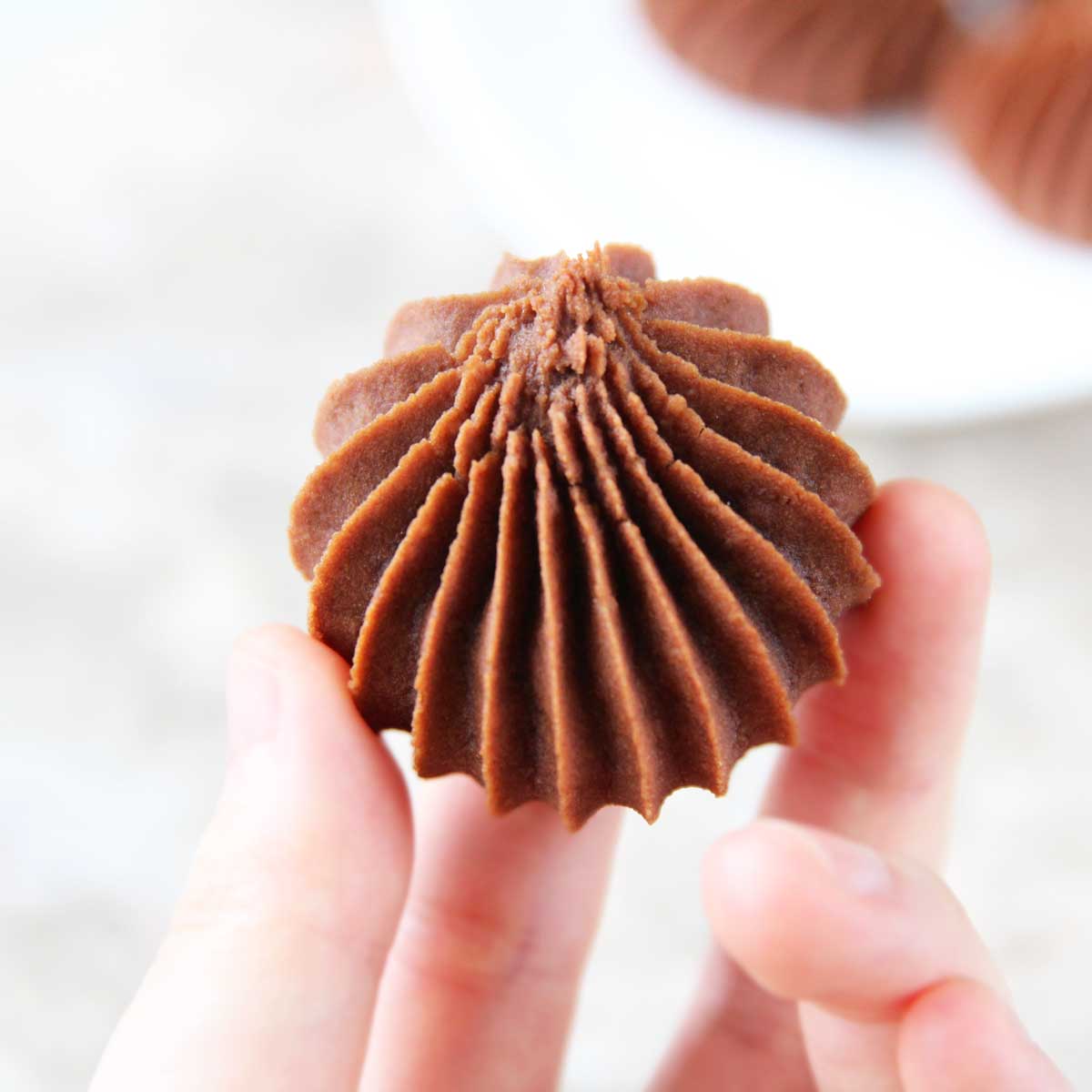
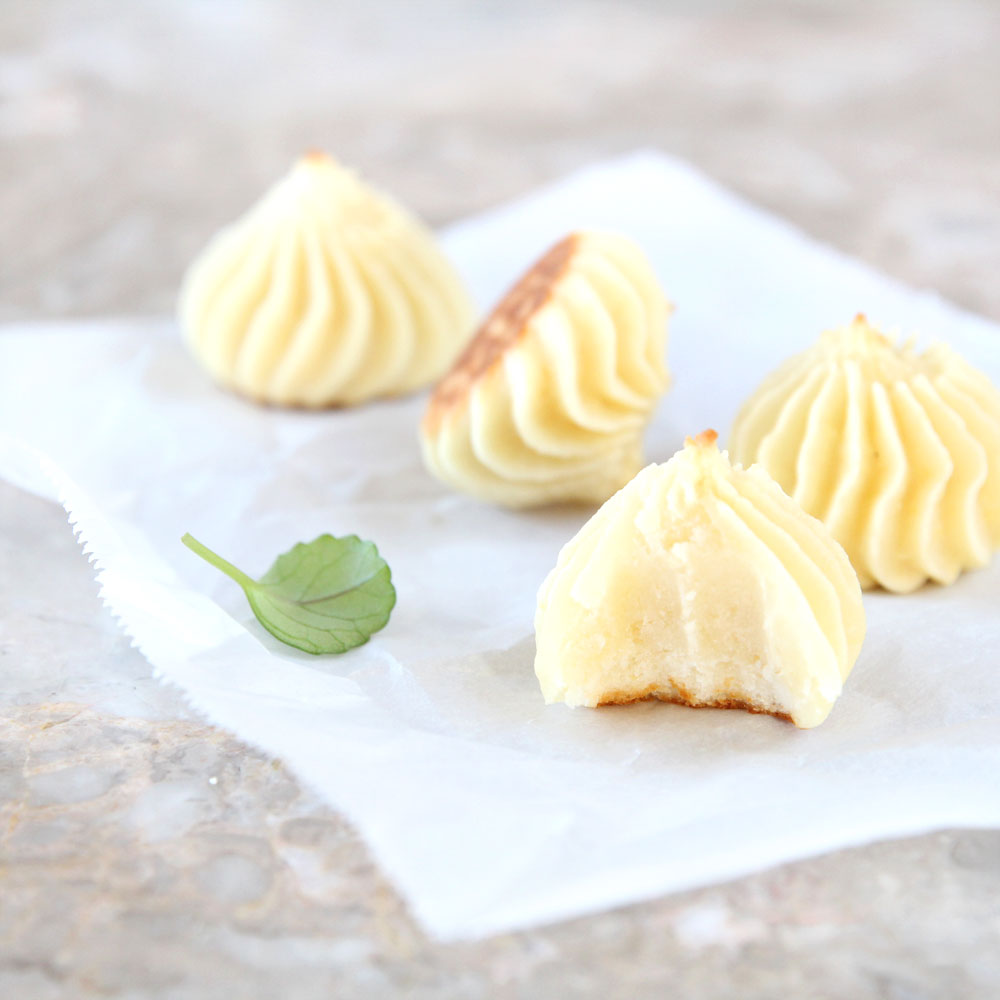
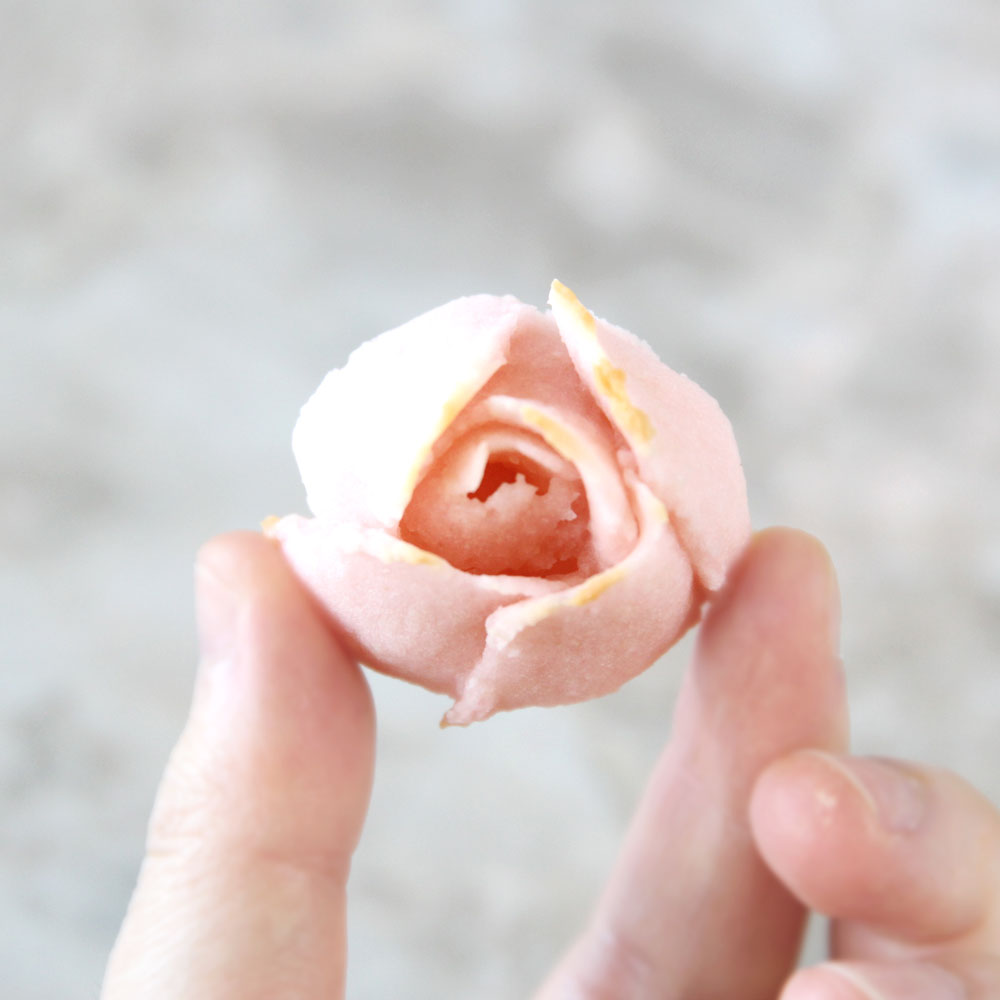
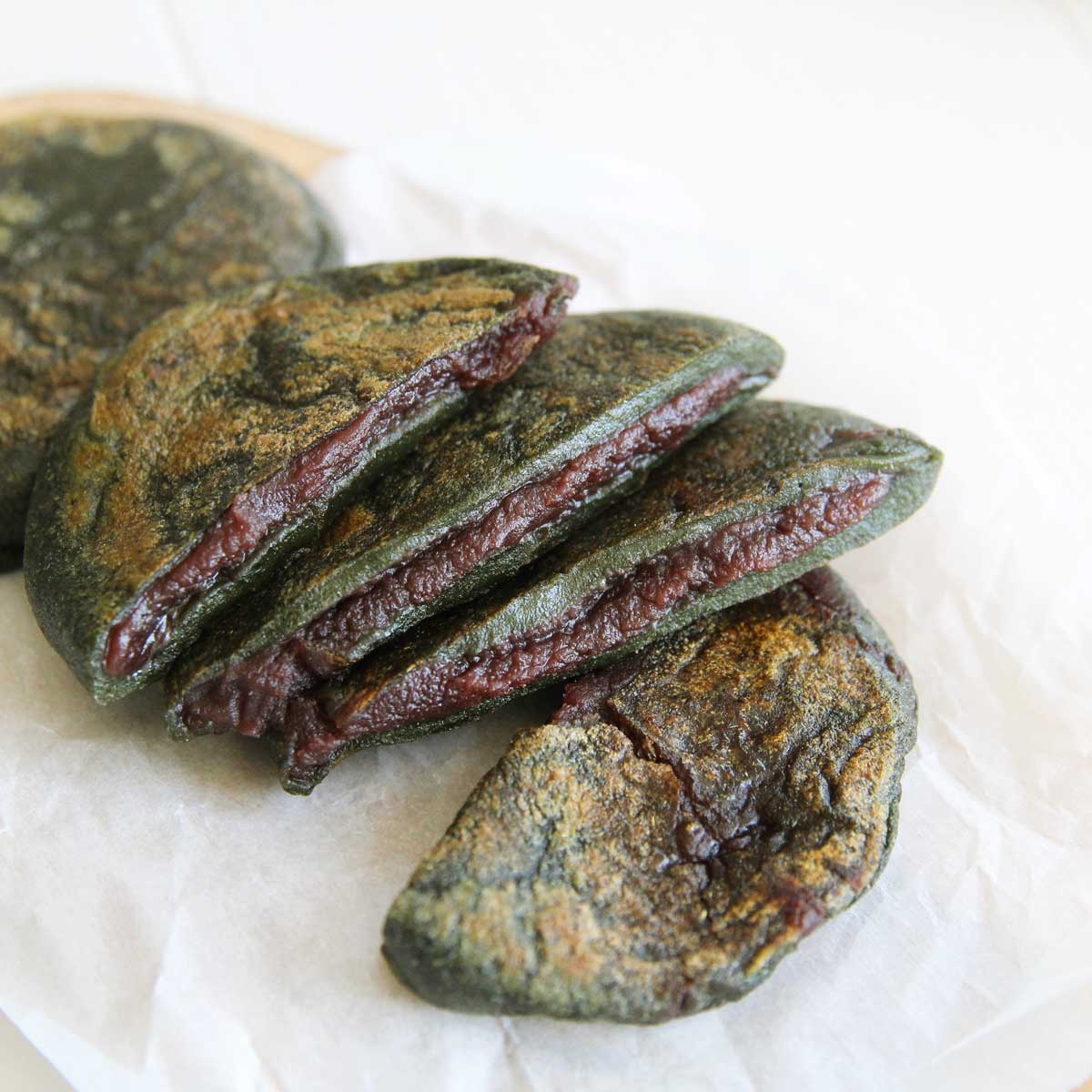
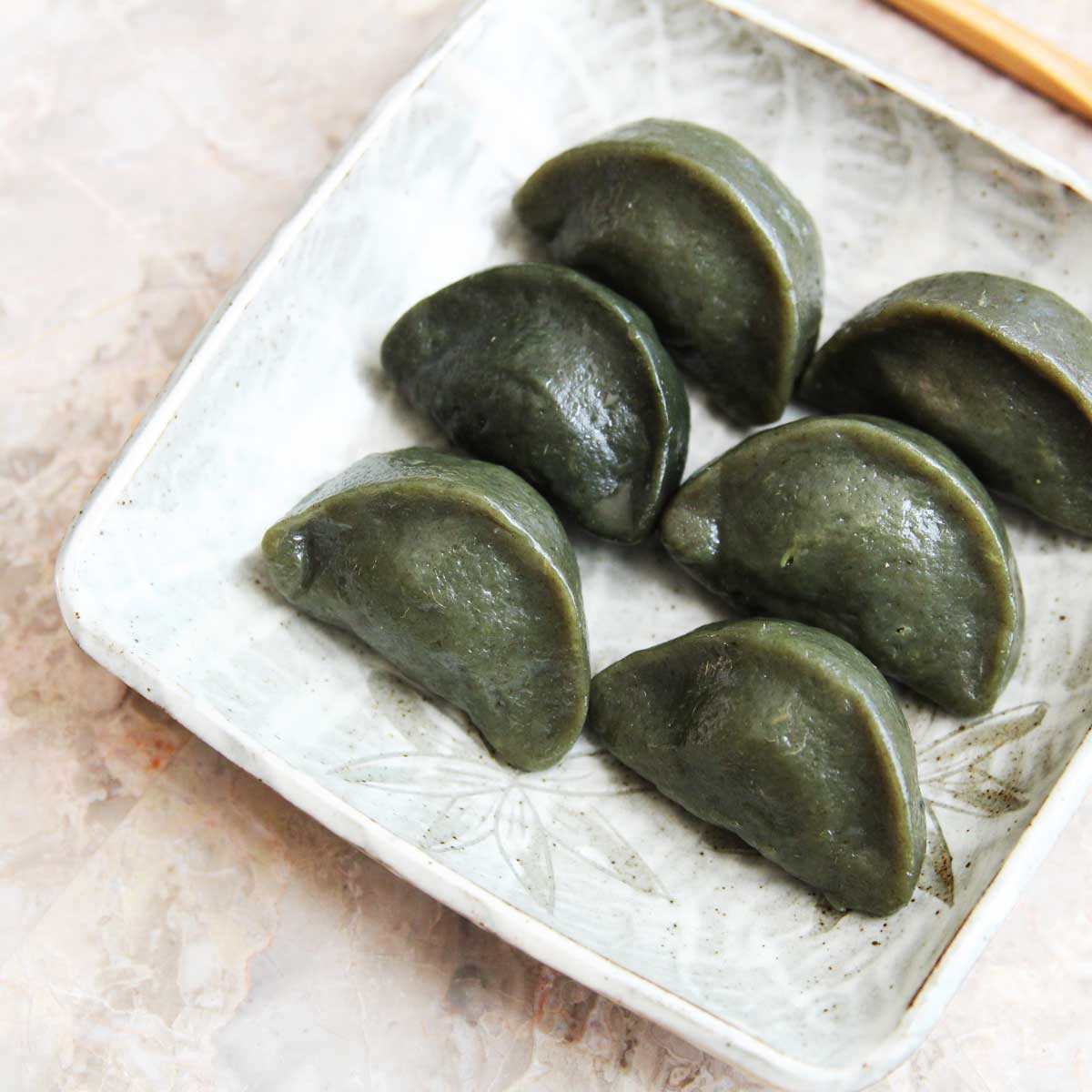
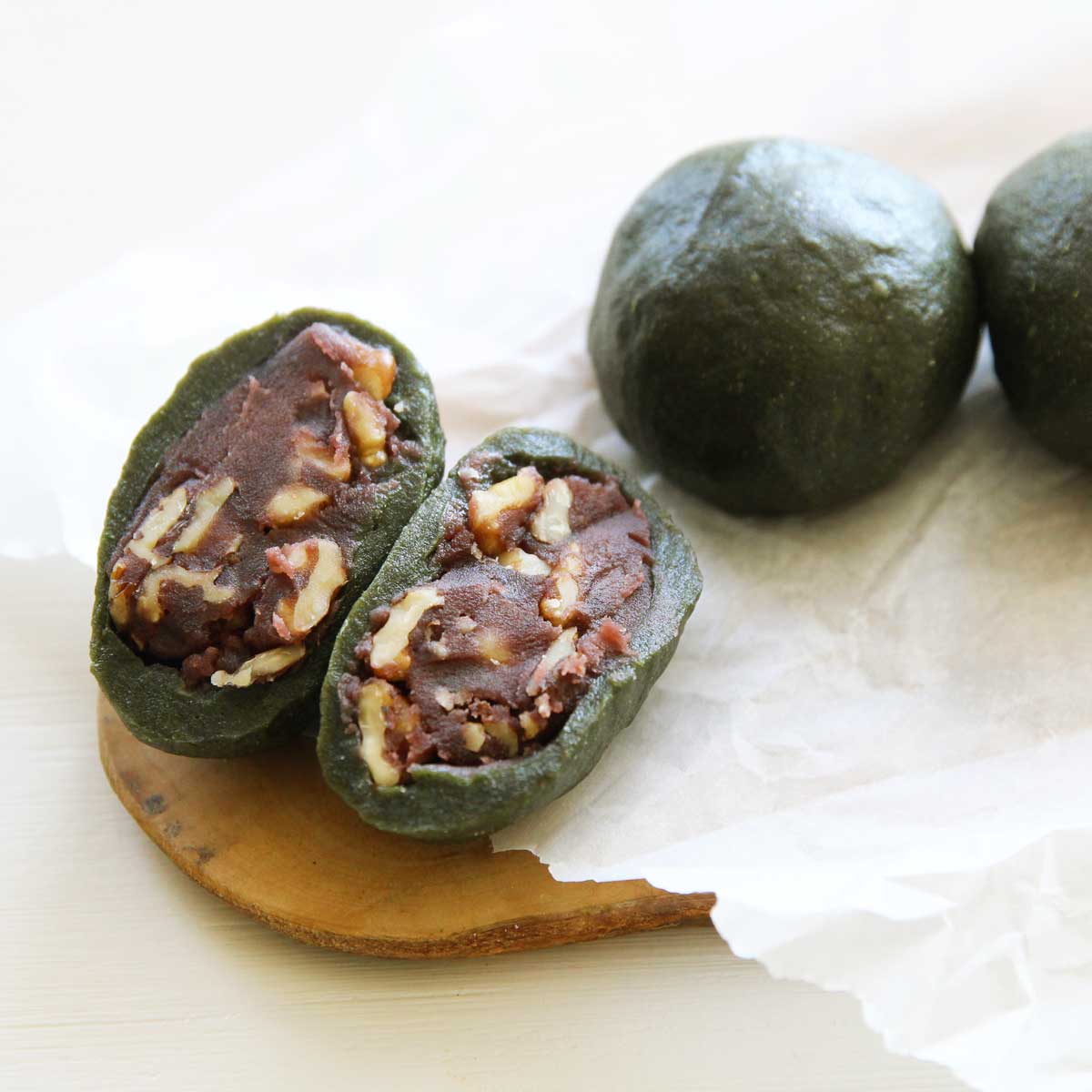
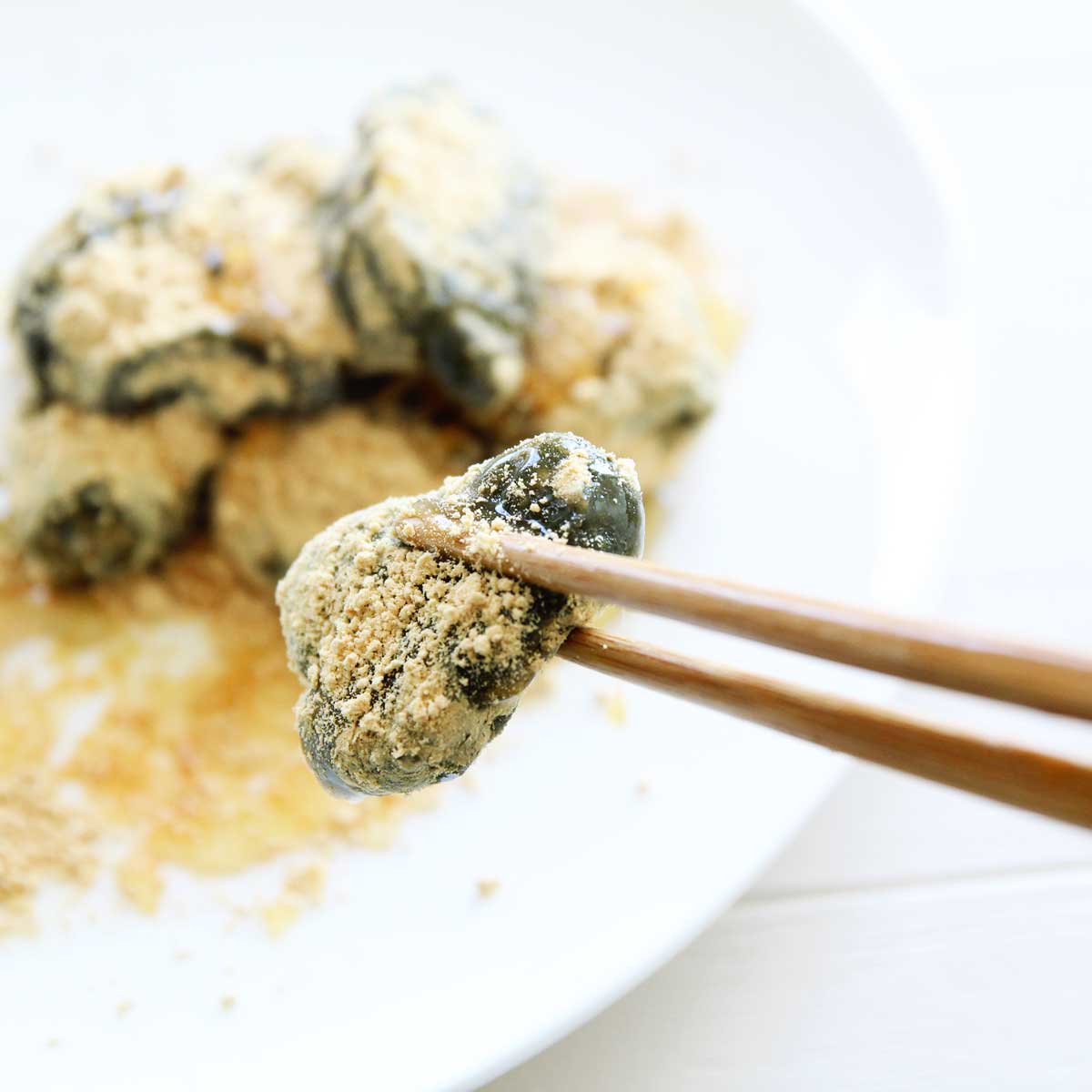
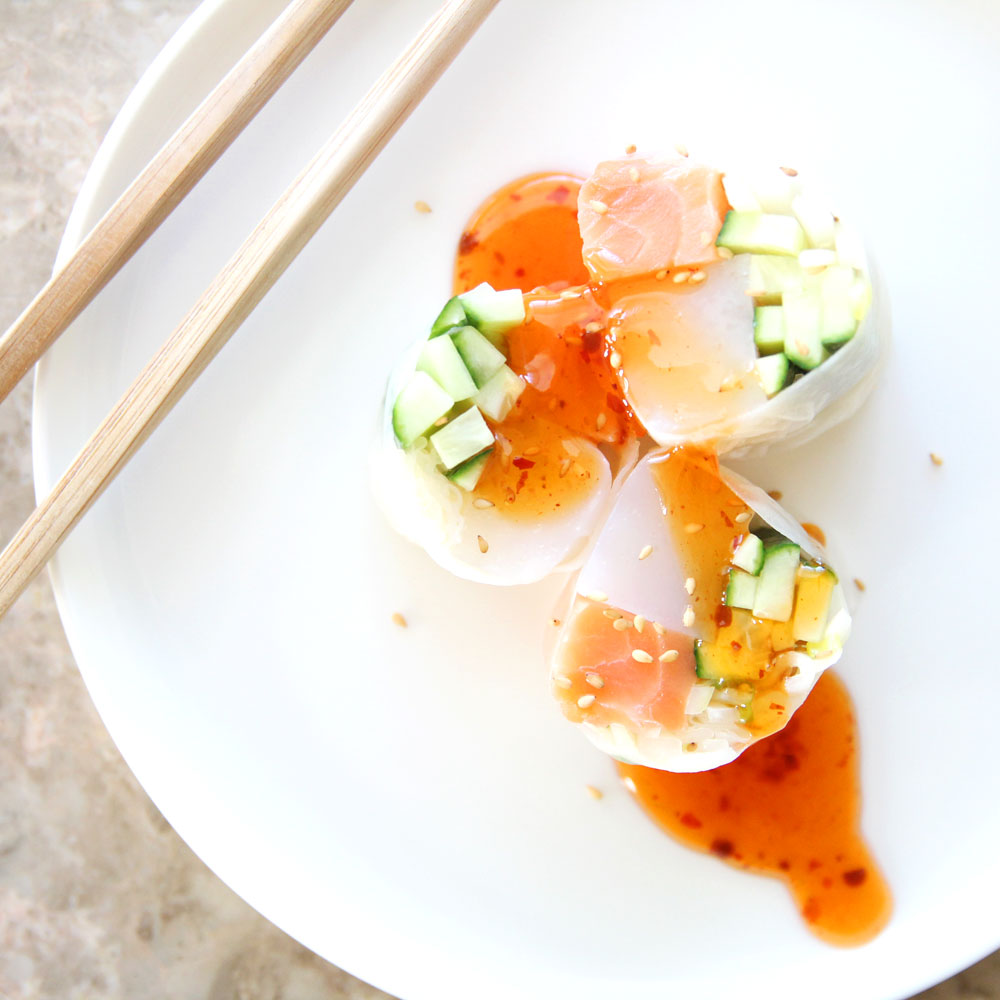
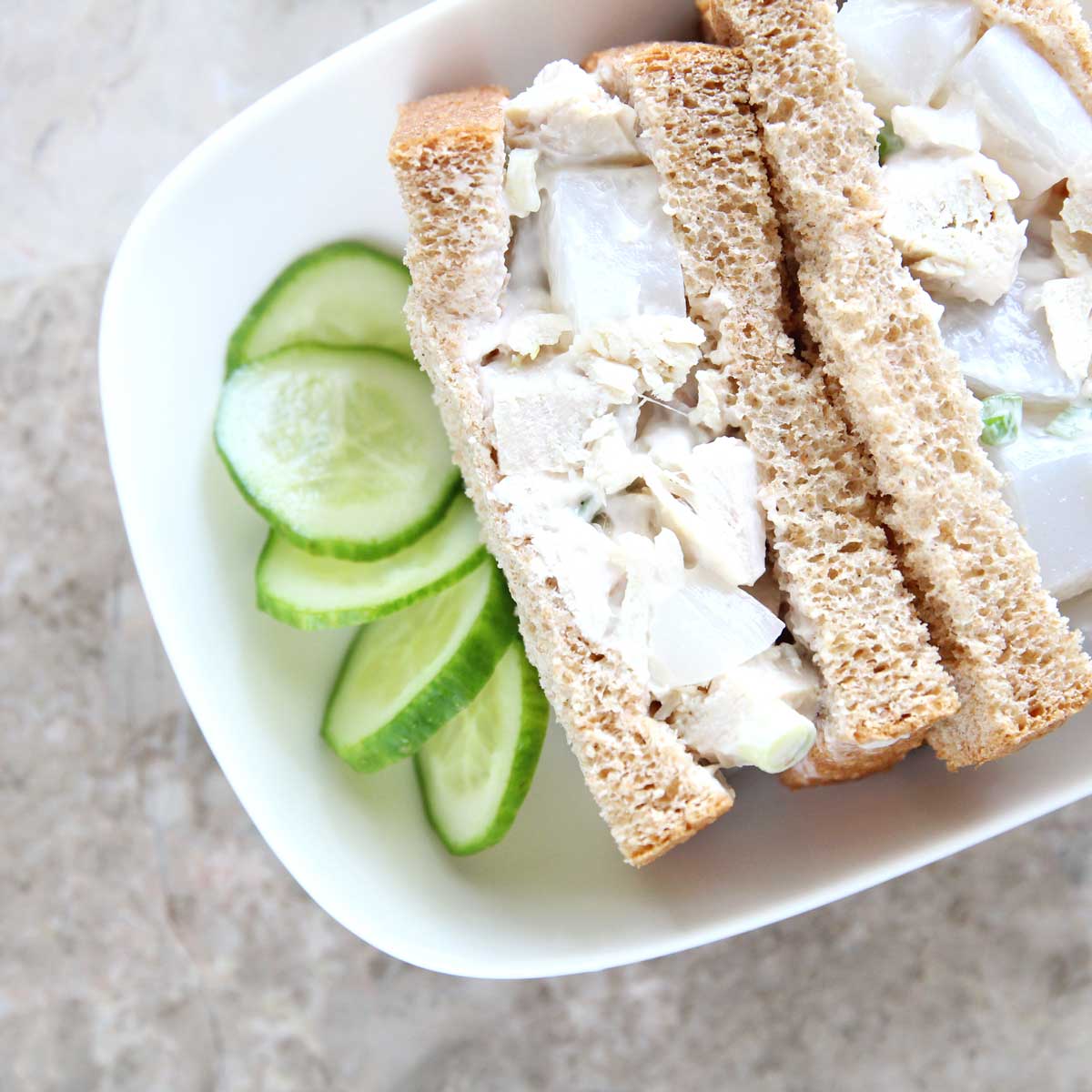
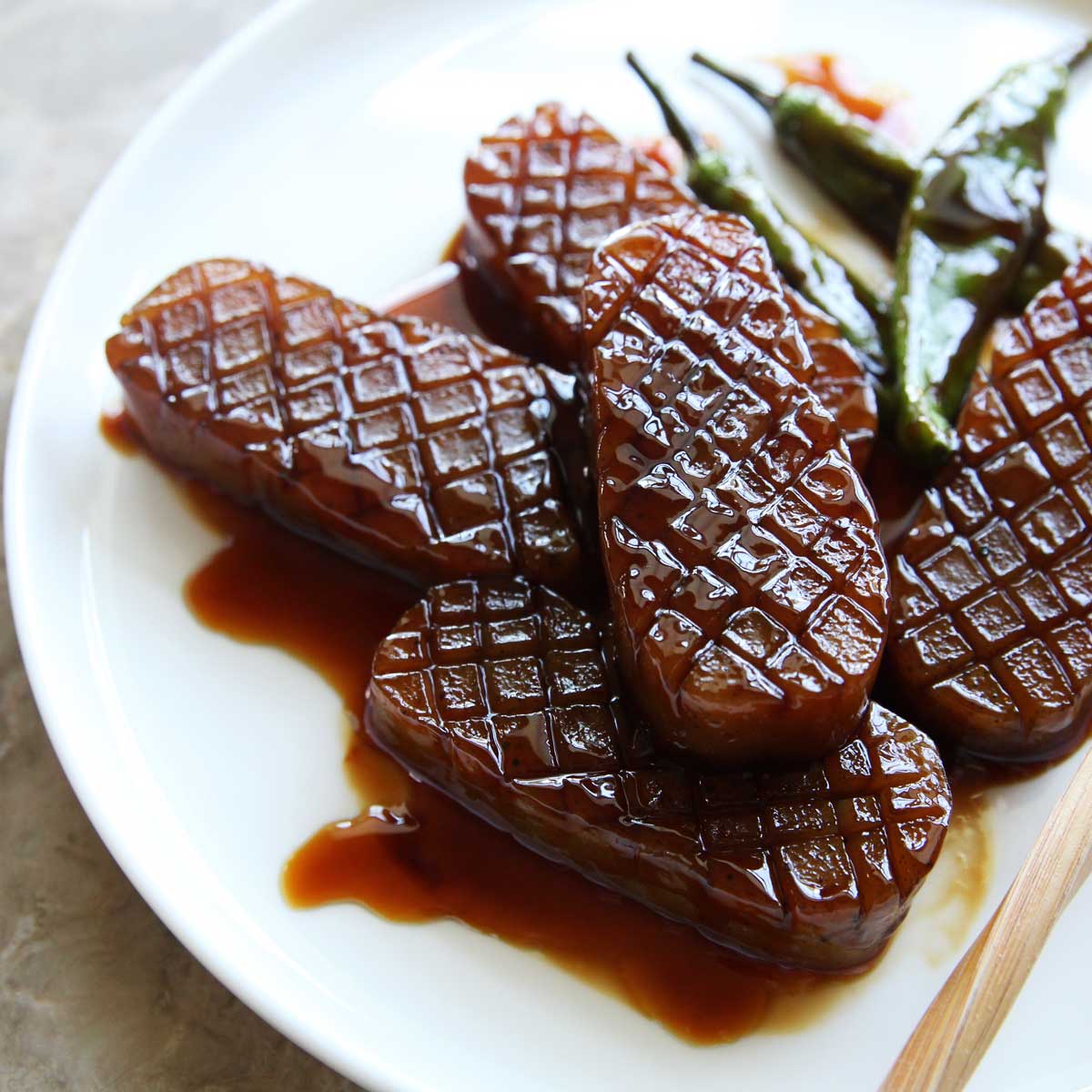
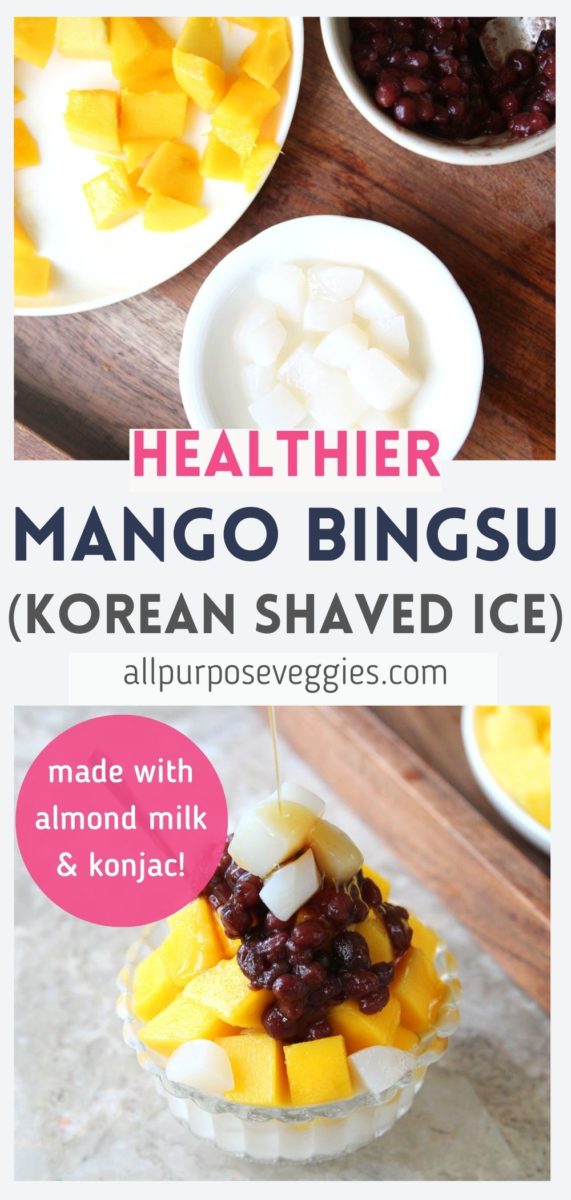


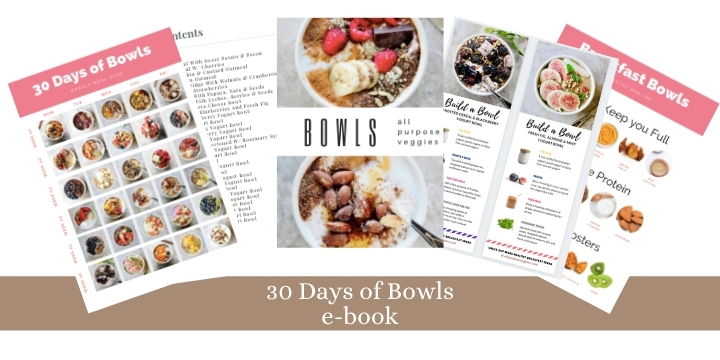

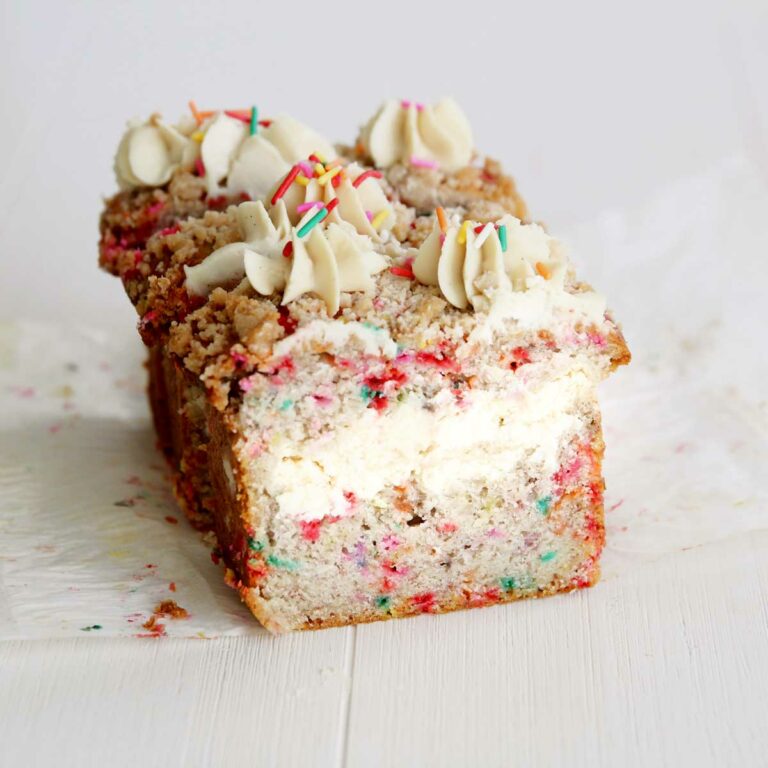
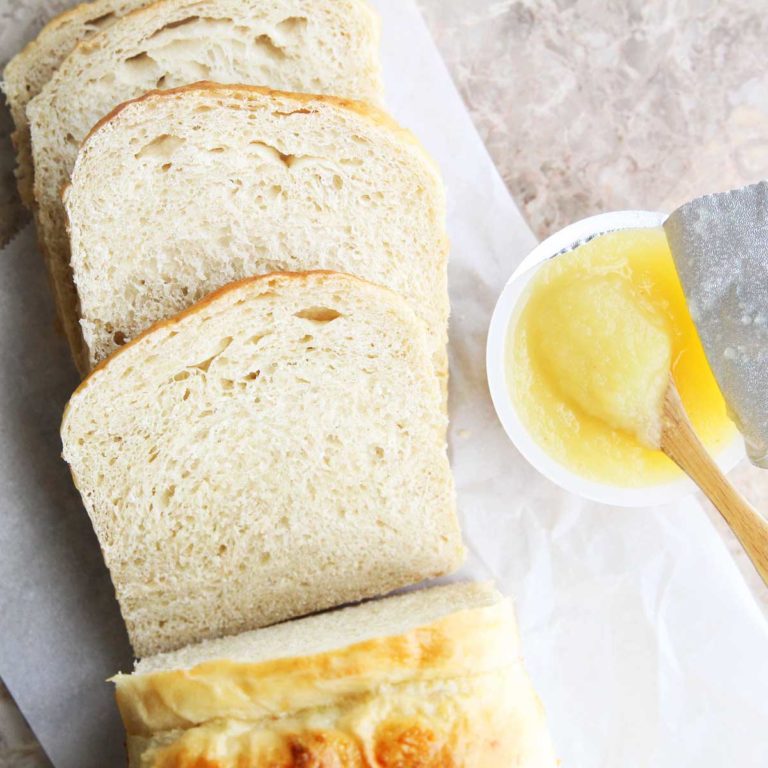
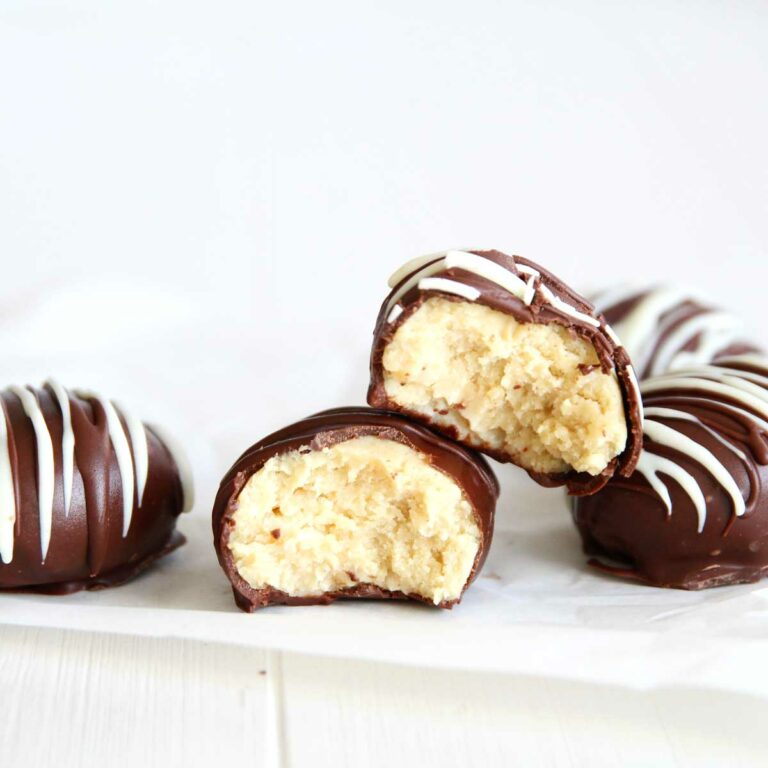
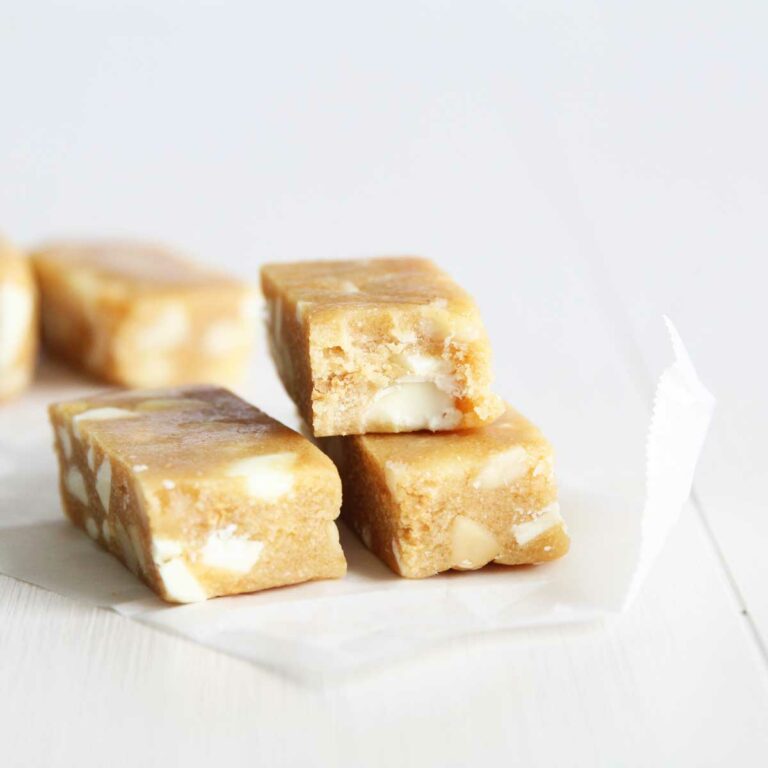
Anonymous says
It was easy to follow!